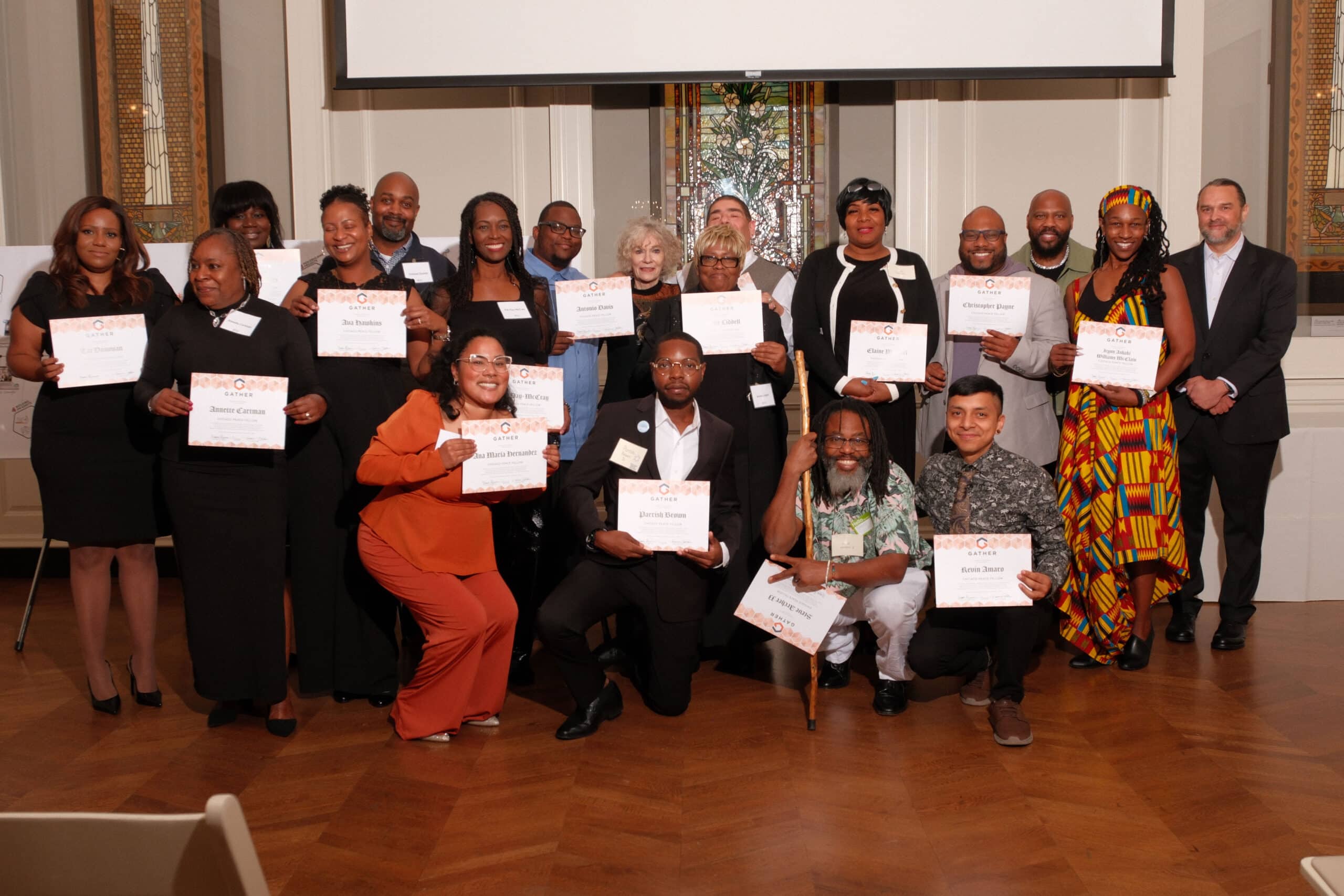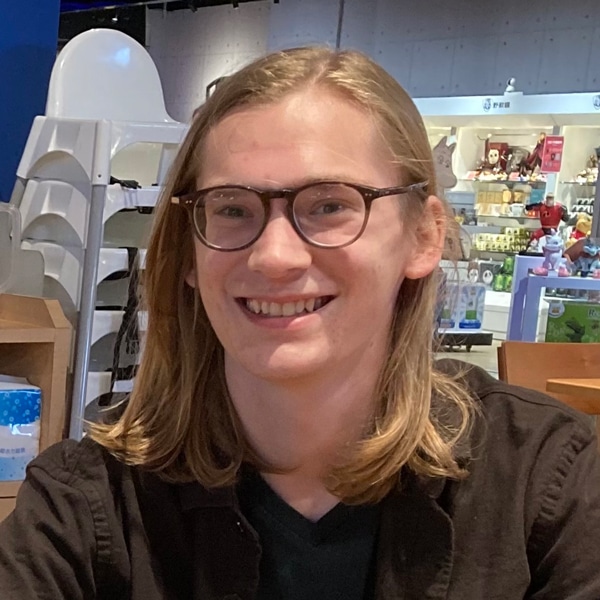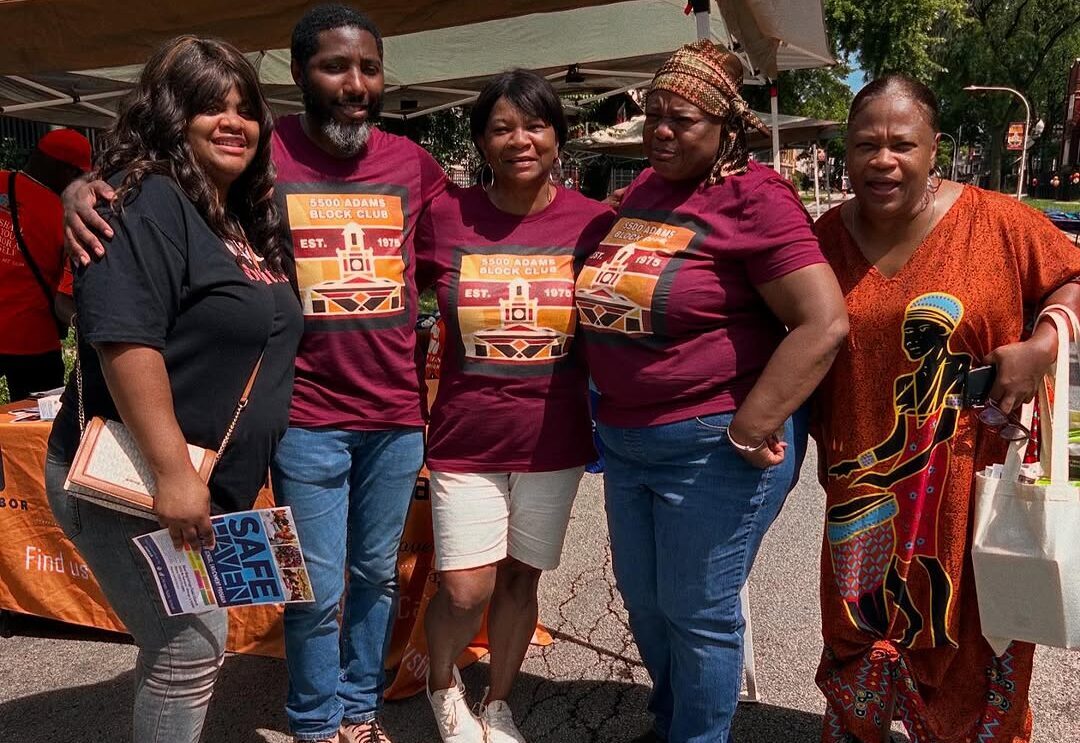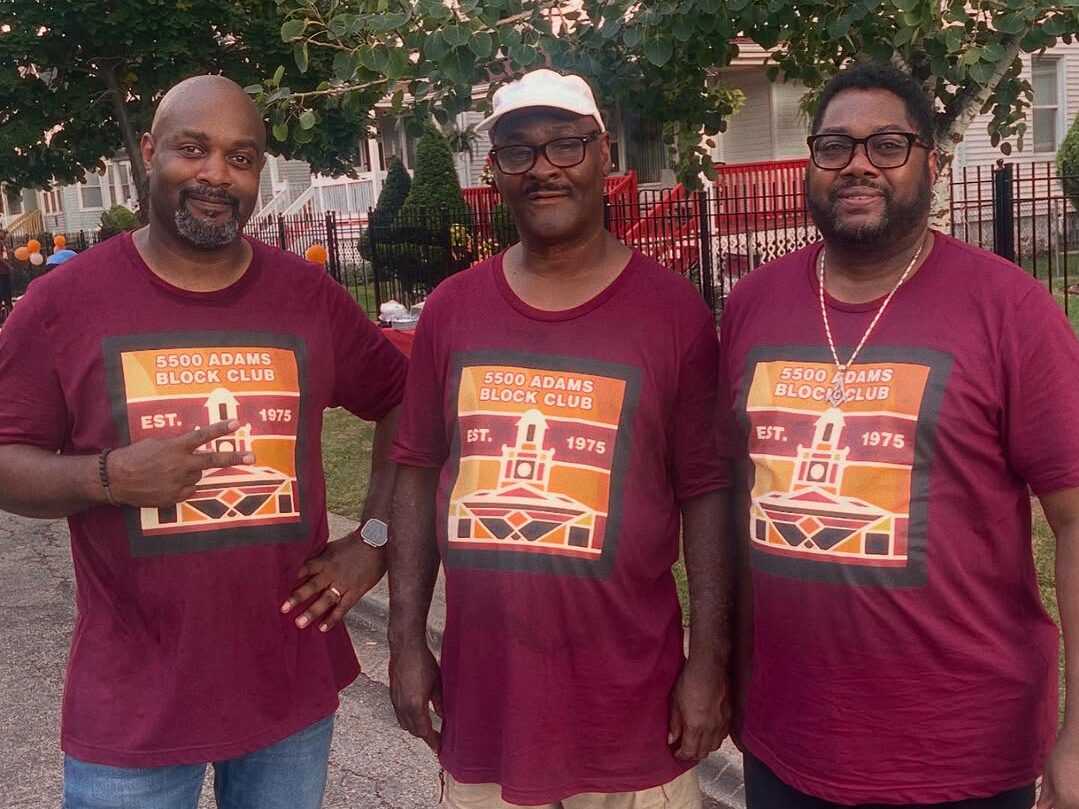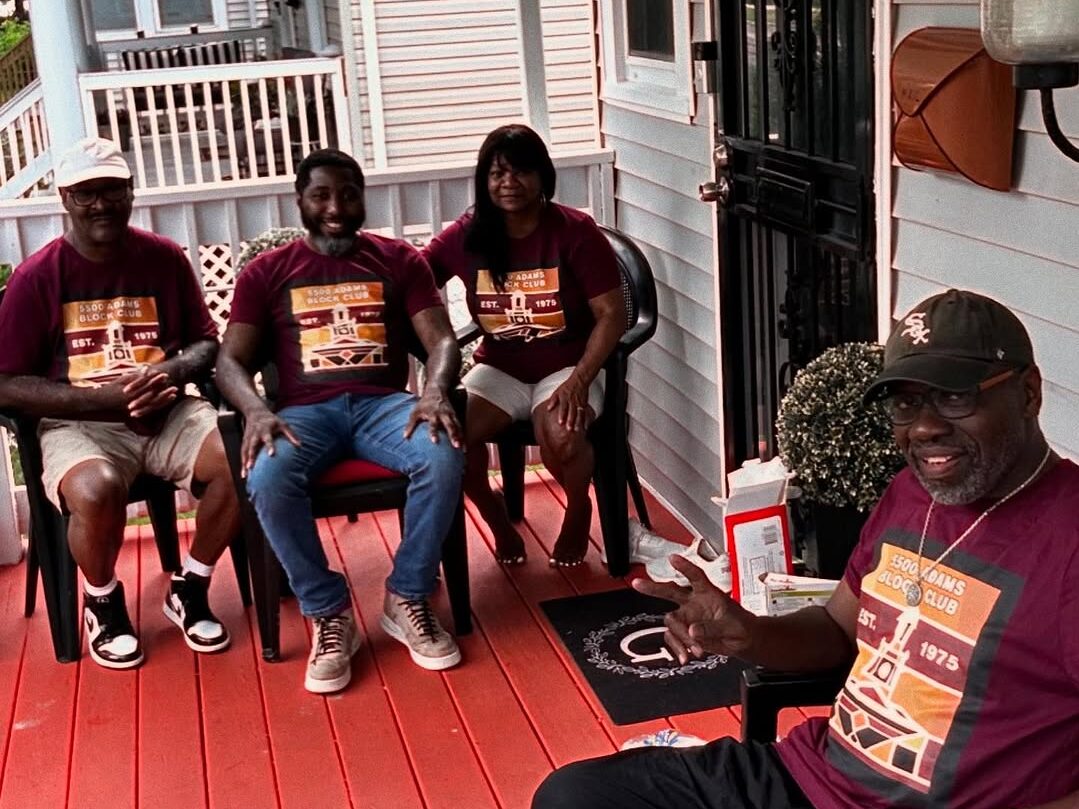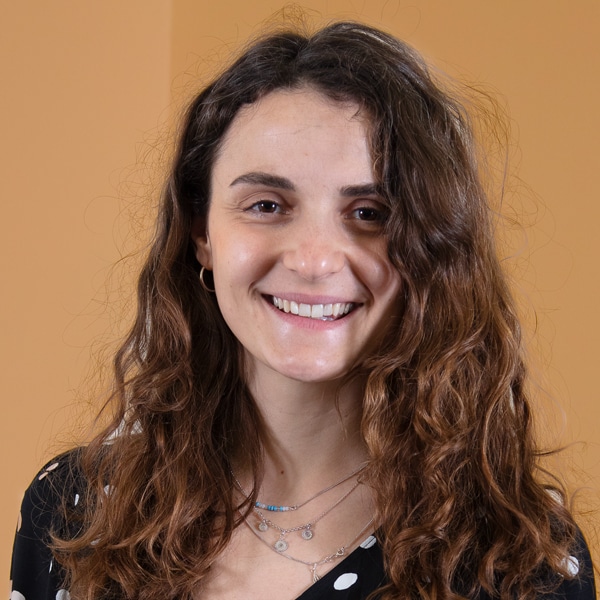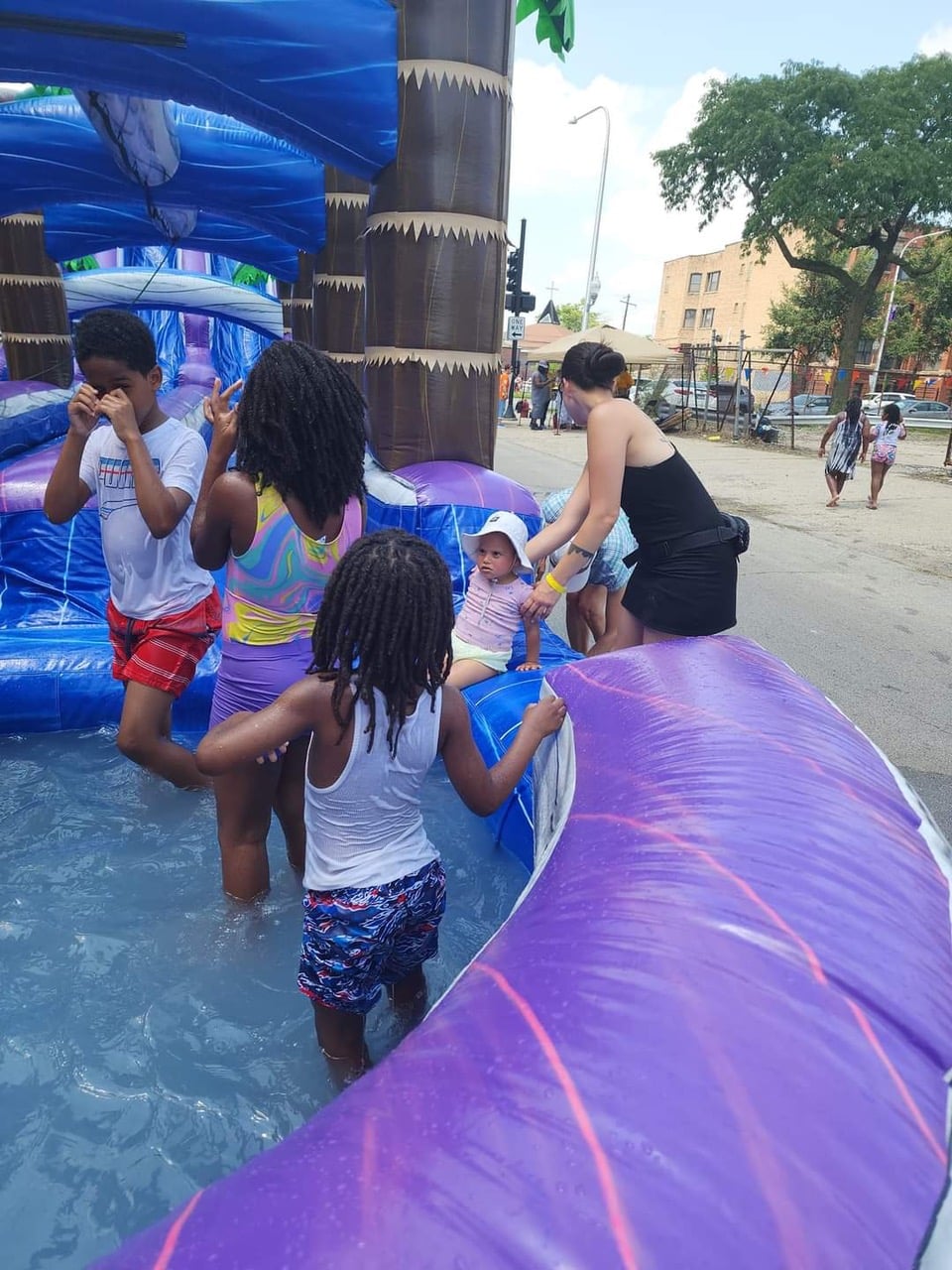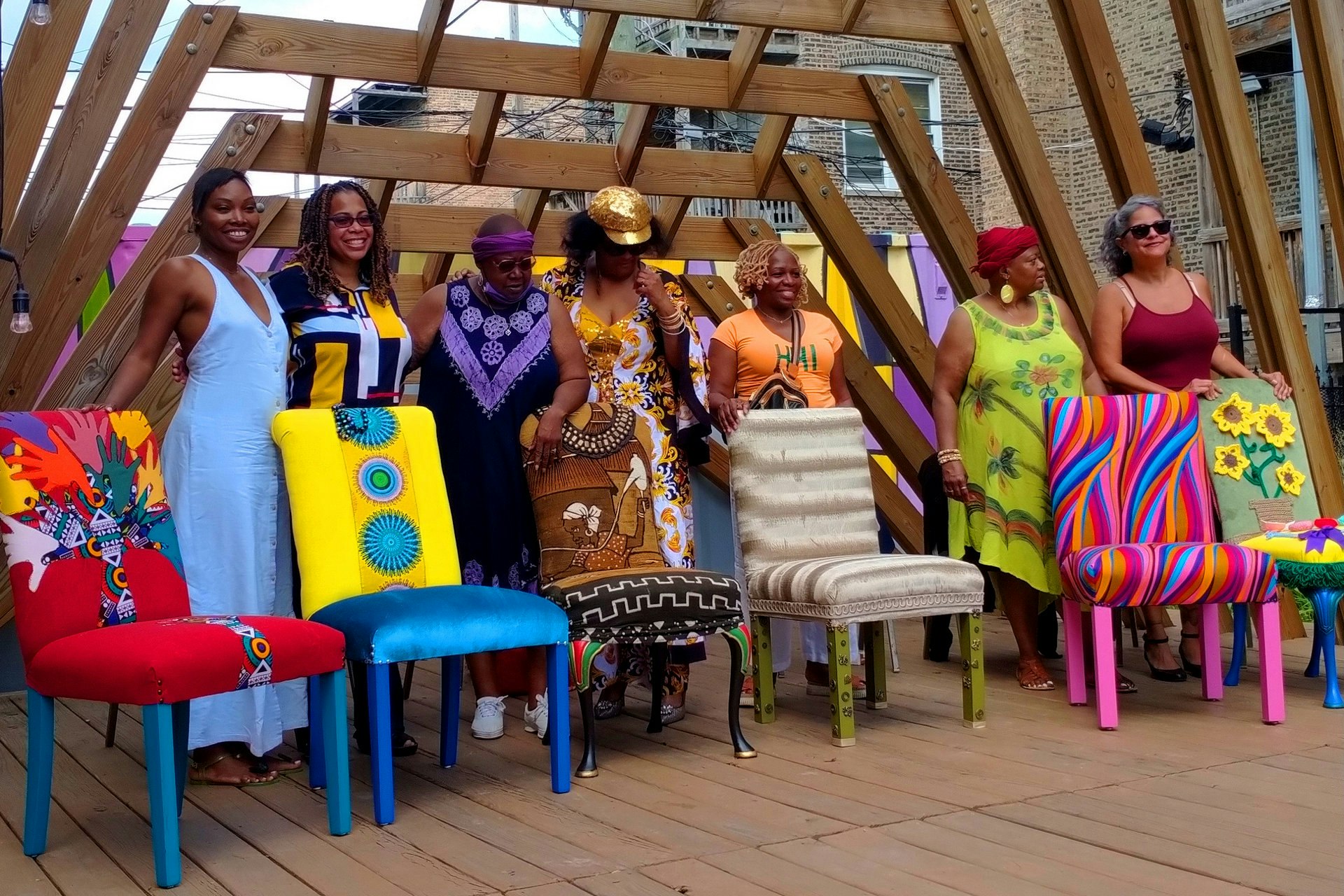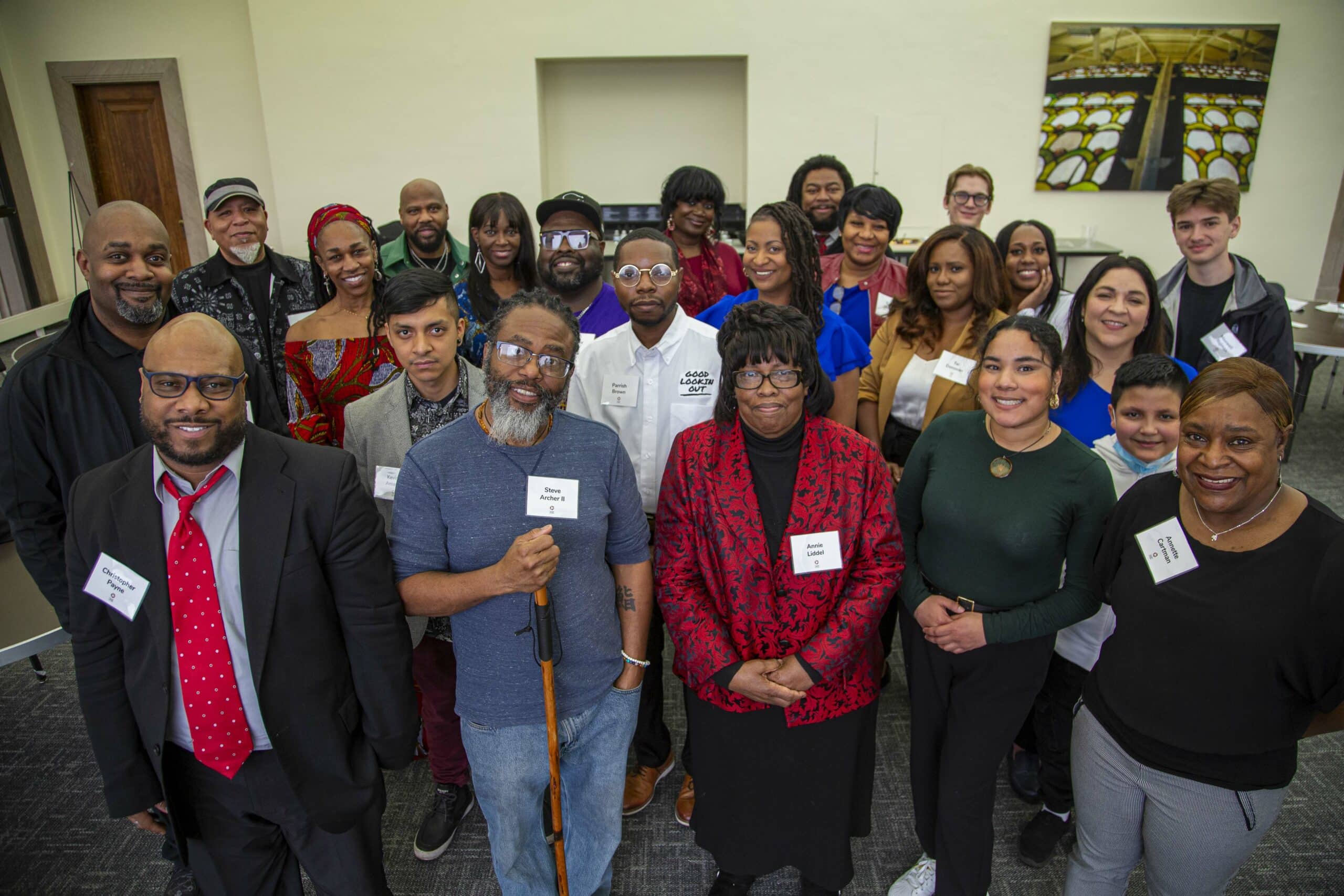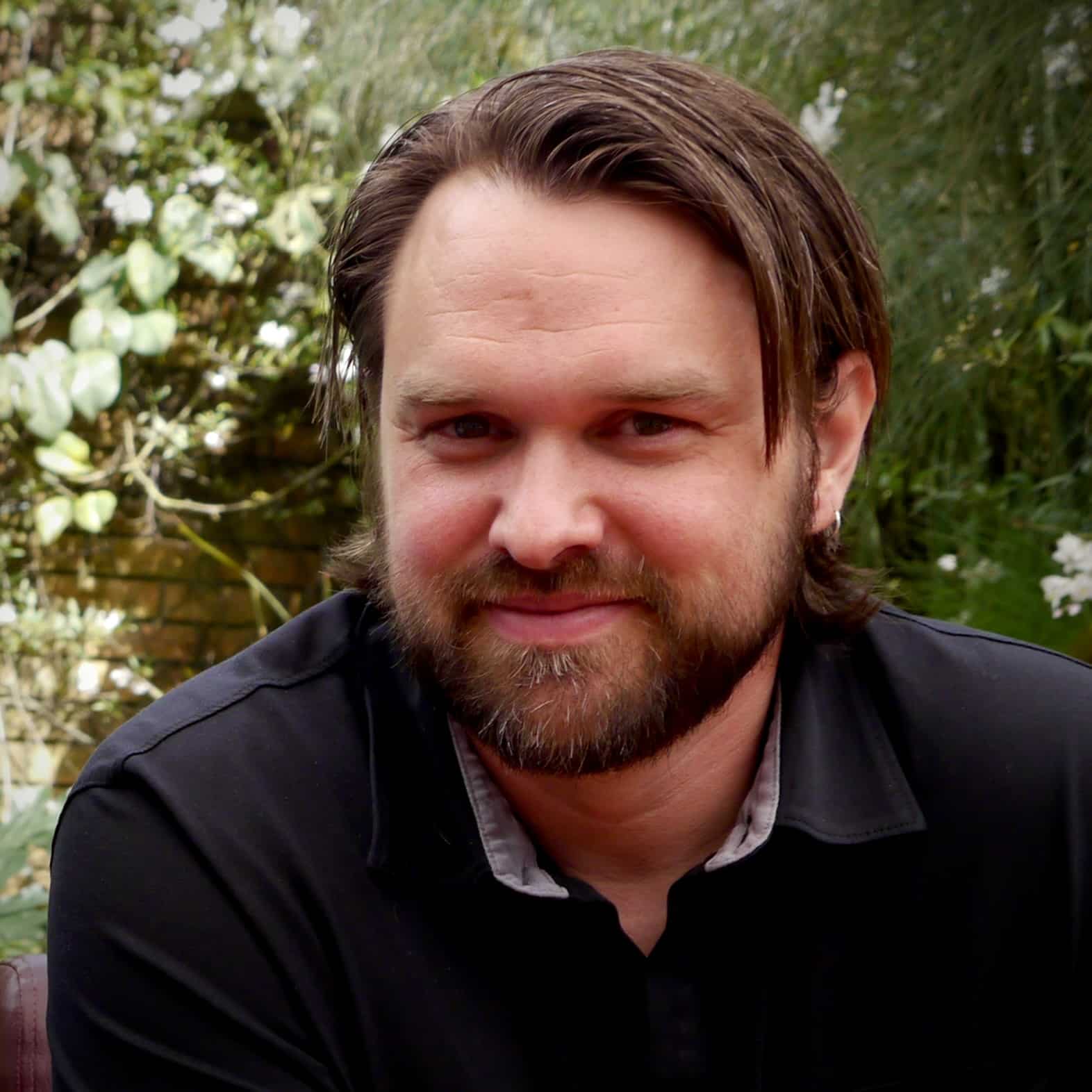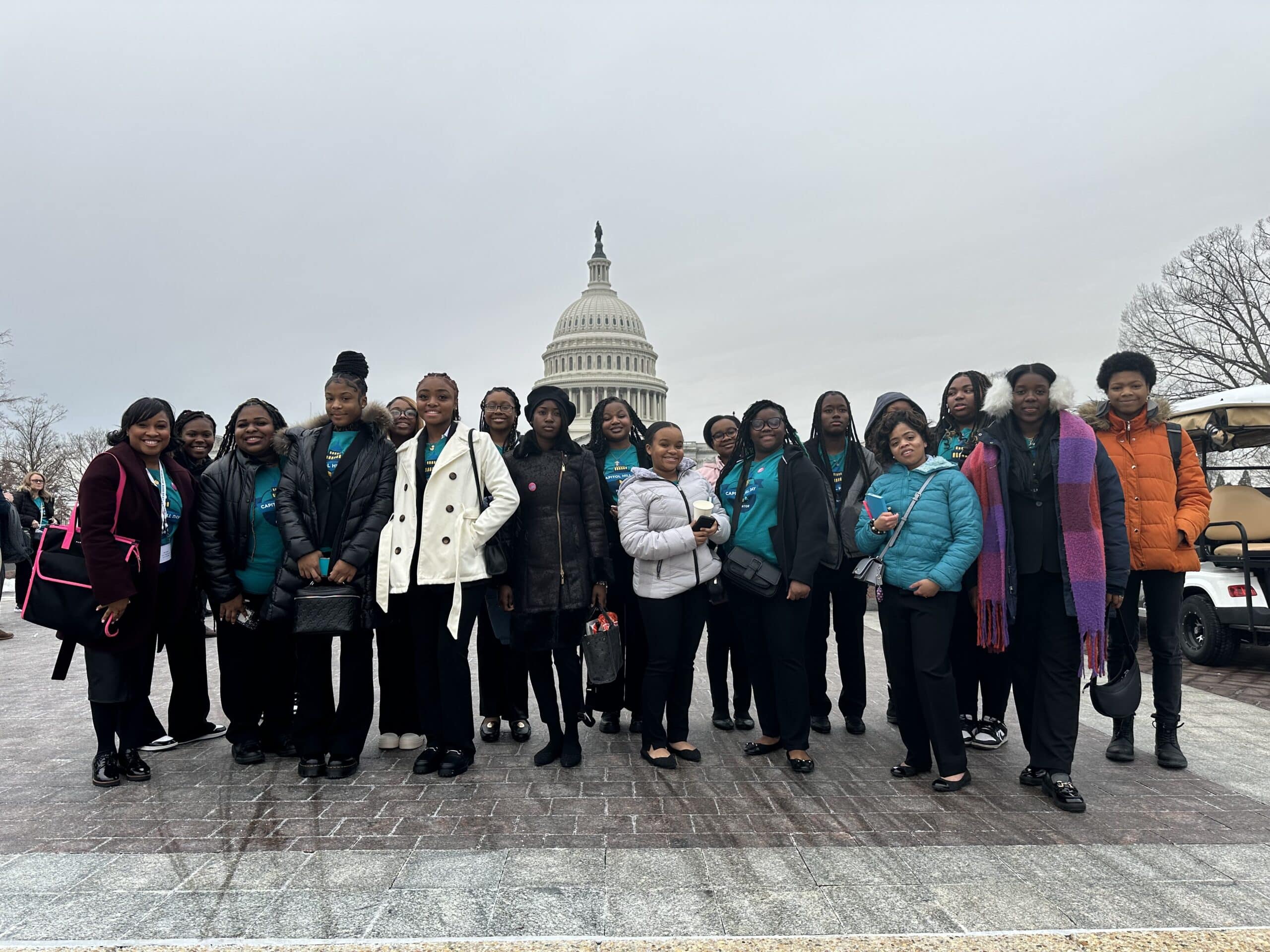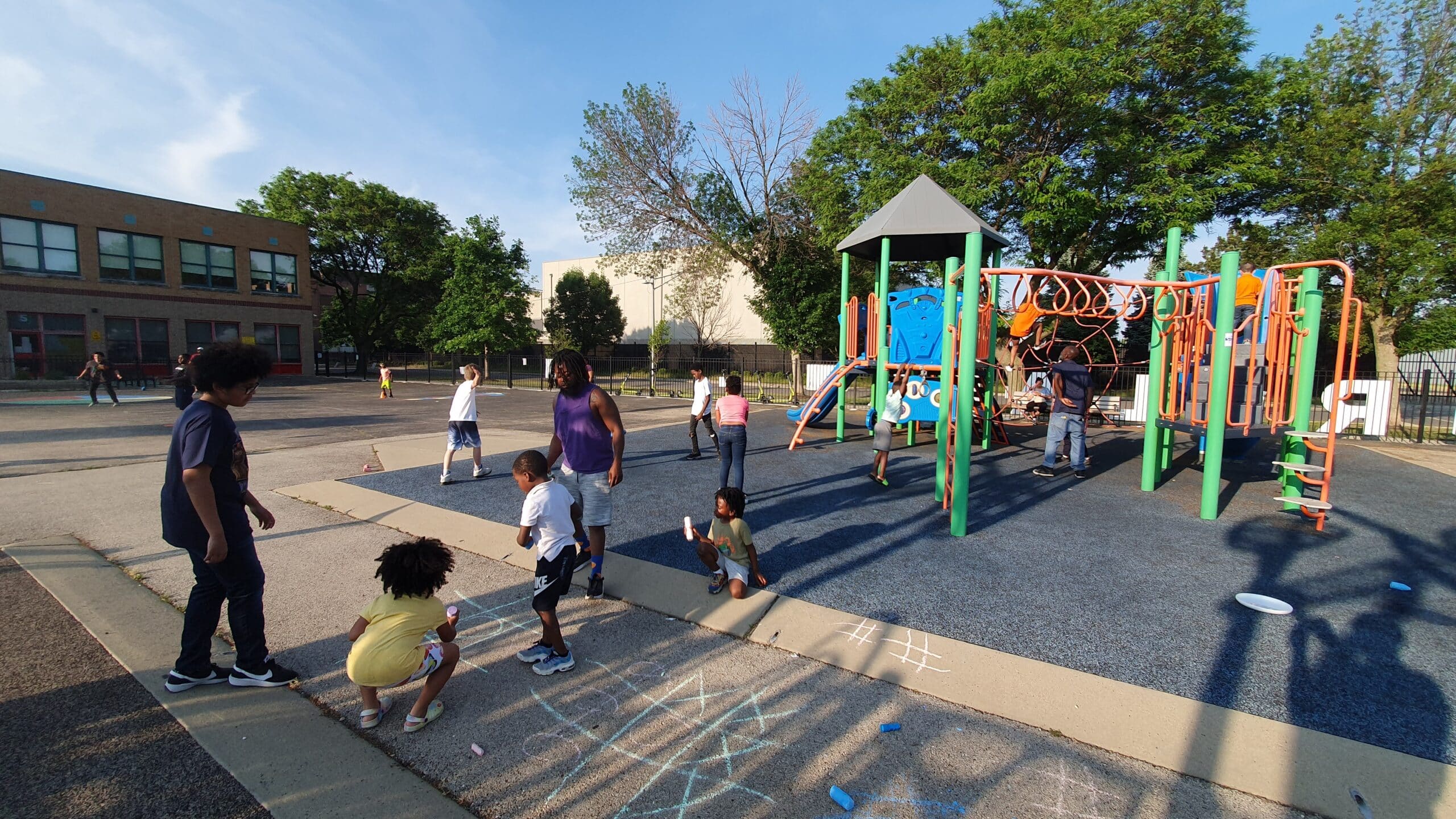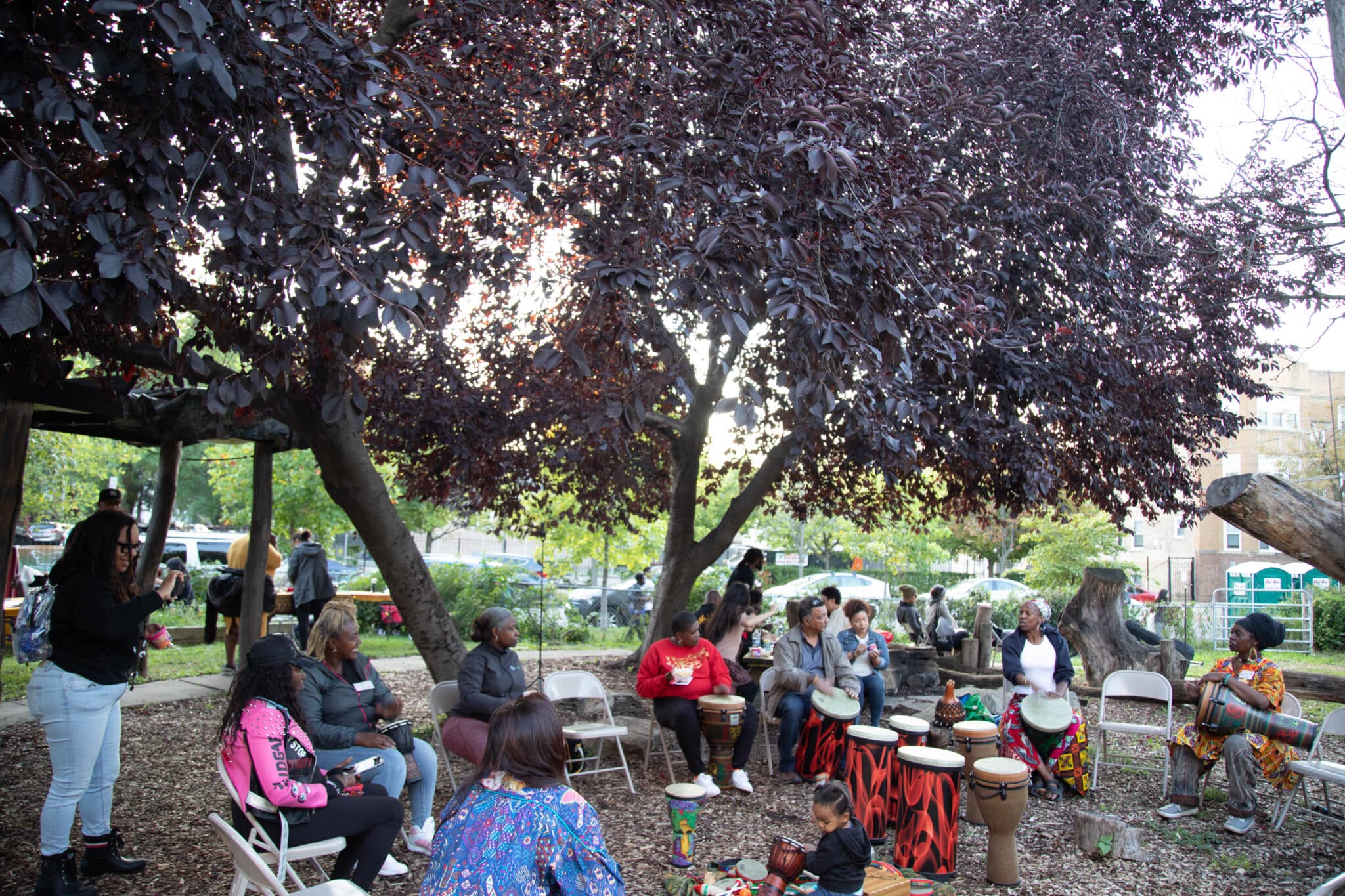Celebrating the Graduation of the 2024 Chicago Peace Fellows
On November 7, 2024, nineteen grassroots leaders from across Chicago gathered at the Chicago History Museum and celebrated their achievements as the sixth cohort to graduate from the Chicago Peace Fellows program. The graduation ceremony was collaboratively planned by the 2024 Chicago Peace Fellows to highlight their experiences, learning and accomplishments and was themed around the idea of “Transforming Together”.
The Chicago Peace Fellows program spanned from March to November and included workshops, partnership meetings, and discussions that helped Peace Fellows to deepen their shared understanding of grassroots leadership, violence prevention, and asset-based community development. Peace Fellows attended workshops at community organizations such as Free Street Theatre, Breakthrough Ministries, and The Institute for Non-Violence Chicago. Throughout the program, Peace Fellows participated in the GATHER, a platform and curriculum built around collaborative learning and action for communities of practice. This shared learning experience culminated in a series of summer projects organized and hosted by the 2024 Chicago Peace Fellows which applied lessons learned through the Peace Fellows program to build peace within their communities.
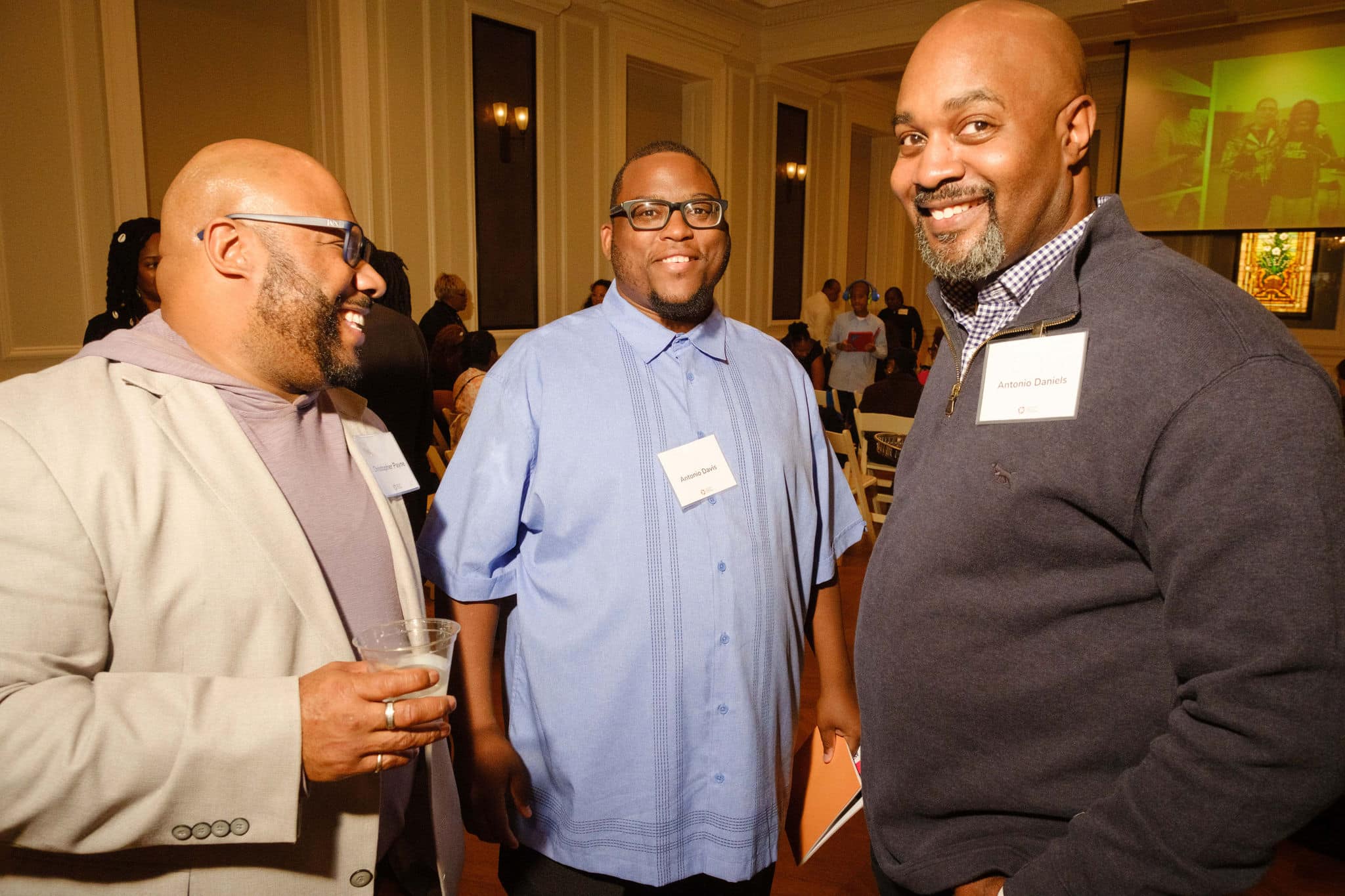
The Sixth Chicago Peace Fellows Graduation
This was the fourth year that the Chicago Peace Fellows graduation has been held at the Chicago History Museum. As fellows, friends, and family members entered the balcony gallery they saw the halls lined with portraits of each of the 2024 Chicago Peace Fellows. In the main hall, they also saw a timeline of the fellows’ journey that broke down each step of the Chicago Peace Fellows program. After taking time to enjoy food, drink, music, and laughter, fellows gathered to begin the graduation ceremony.
The graduation ceremony was opened by the Goldin Institute’s Senior Director of Programs John Zeigler, who called the fellows into community and took a moment to honor our ancestors. John took a moment to honor John McKnight in particular, who co-founded the Asset-Based Community Development Institute alongside Jody Kretzmann at DePaul University. Asset-Based Community Development is a central focus of the GATHER curriculum and models community change on building up assets and resources that already exist within neighborhoods.
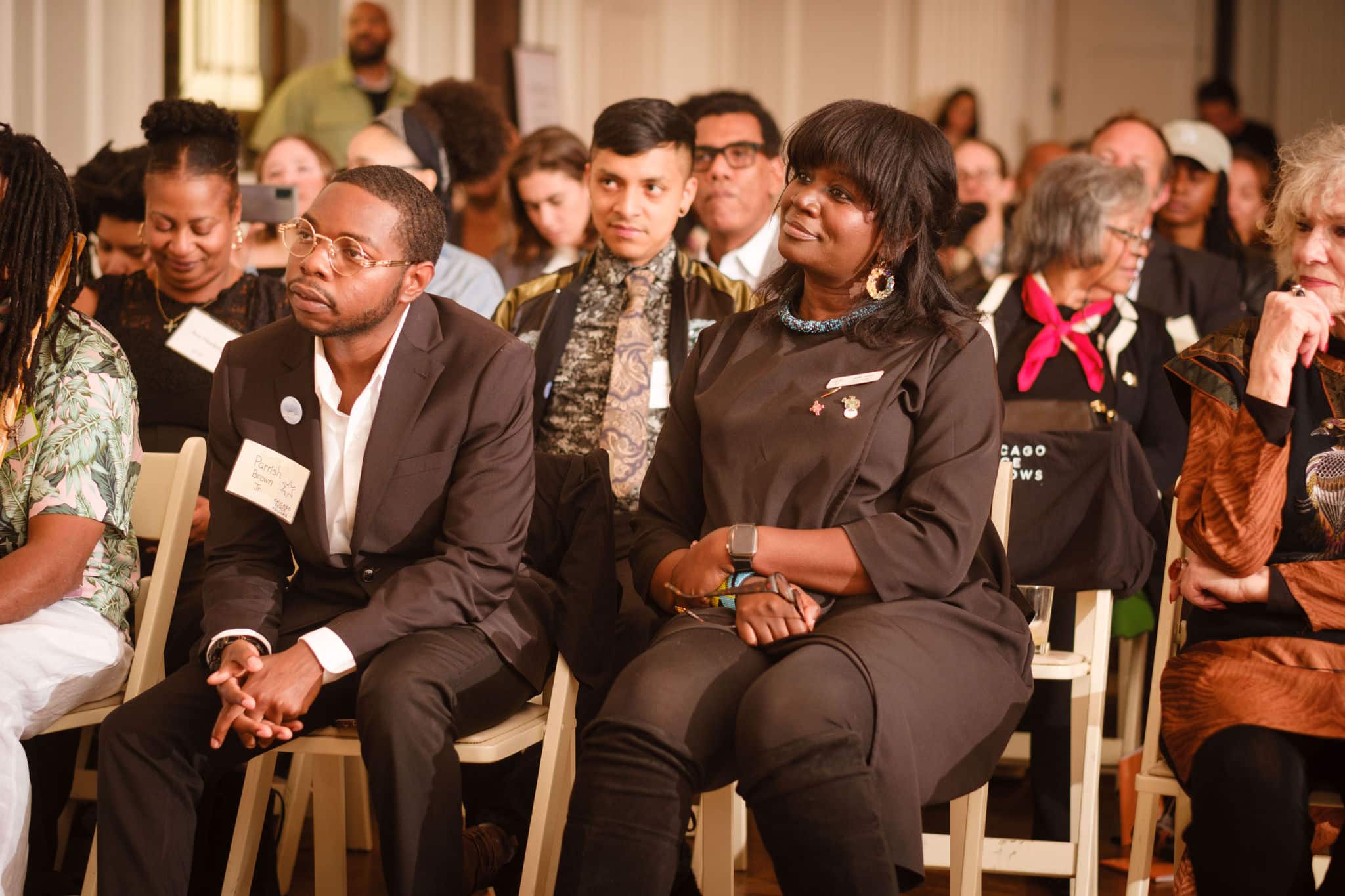
Michael Henderson, Director of the Chicago Peace Fellows, followed John Zeigler by recapping highlights from the 2024 Chicago Peace Fellows Program and then introducing four groups of fellows. The groups organized around the theme of “Transforming Together” and each took a separate sub-theme to reflect on their experiences as Peace Fellows: “Growth”, “Perspective”, “Fellowship”, and “The Power of One”.
How Fellows Transformed Together
The “Growth” group consisted of Elaine Martel, Steve Archer II, Parish Brown, and Aniki Coates. They began their presentation with a quote used by Mexican activists in support of the Ayotzinapa 43: “They tried to bury us but they did not know we are seeds.” Each member of the group took time to reflect on how leadership can begin as something small and full of potential and can grow into something large and impactful.
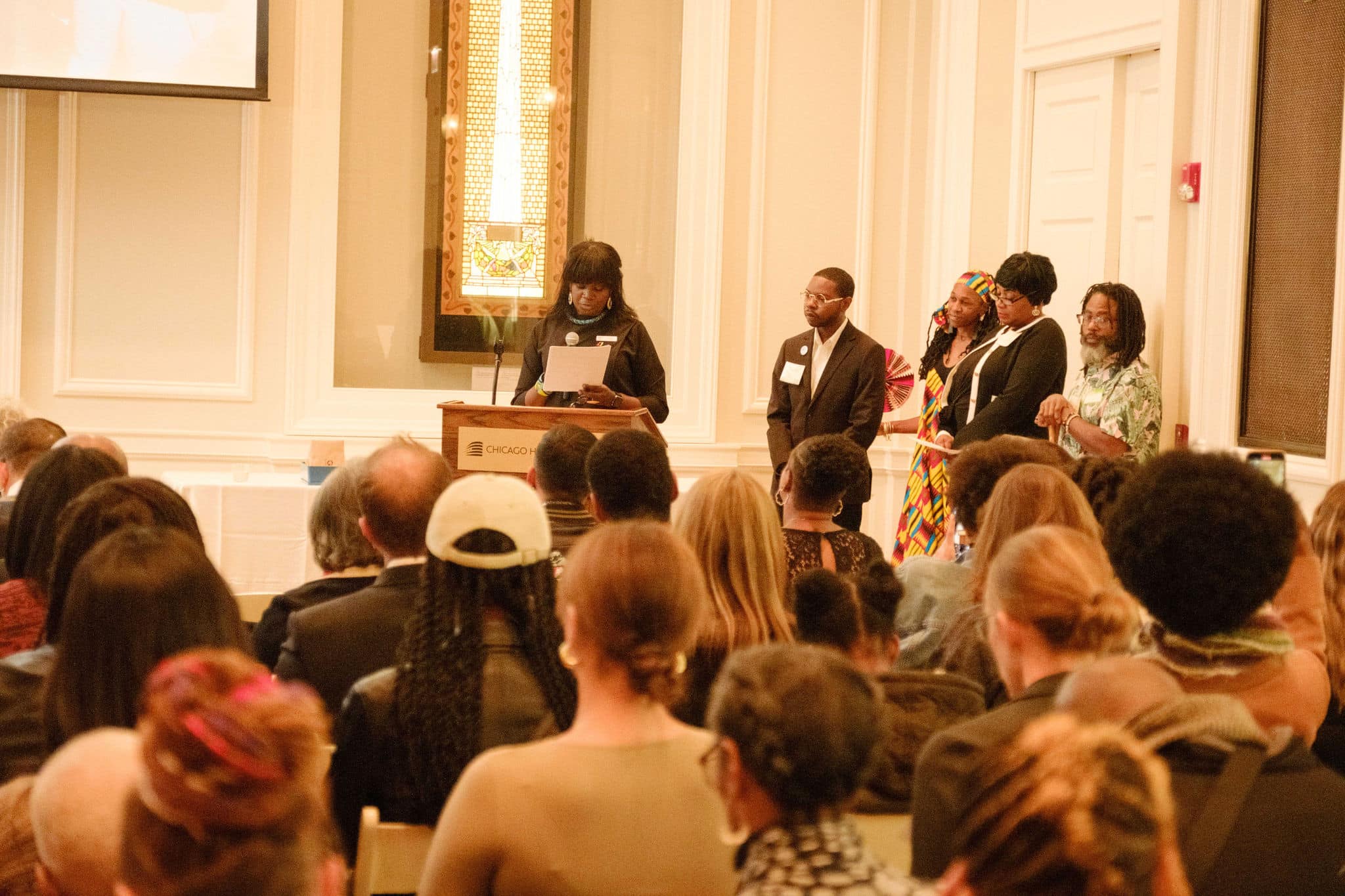
The “Perspective” group consisted of Tai Donovan, Ava Hawkins, Kevin Amaro, Anthony Jones, and Ariel Rainey. They shared a video where Peace Fellows from the 2024 class shared how their perspective on activism and change-making was expanded by the program. They focused in particular on how the program shifted their perspective from a problem based view to an asset-based approach.
“In medicine we are trained to zero in on problems, to diagnose what’s wrong and fix it, and that's the mindset I brought with me. I was ready to help fix what I saw as gaps or issues in our communities. But being a part of this program has truly changed the way I see things and my perspective. I’ve learned to focus on not just the challenges, but the strengths, resilience, and unique assets that our communities have.”
-Tai Donovan, 2024 Peace Fellow and Director of Operations at the Medical Careers Exposure and Emergency Preparedness Initiative
The “Fellowship” group consisted of Tony Daniels, Antonio Davis, Christopher Payne, Annette Cartman, and Riccadonna Chaidez. They presented a video that focused on how the Peace Fellows program provided opportunities for connection and collaboration between different community organizations. Throughout the video different Peace Fellows reflected workshops and events where they came together to make little libraries, learned about different block clubs throughout Chicago, went on community walks, and more.
“The Fellowship has supported my professional growth in a number of different ways. Outside of being in connection with other leaders throughout the city, it has also given me some great training tools and modules that have allowed me to walk through and really reexamine the kind of work I am doing as a block club president and how that affects peace in our community.”
-Tony Daniels, 2024 Peace Fellows and President of the Adams Block Club, 5500
The “Power of One” group consisted of Ana Maria Hernandez, I.Ashaki Williams McClain, Annie Liddell, Pat Day-McCray, and Jason Michael Maldonado. They took turns reflecting on the power of both individuals and a group of people as a united force. Their presentation ended with a poem recited by Ashaki Williams McClain.
As the 2024 Chicago Peace Fellows graduation ceremony came to a close, Travis Rejman, the Executive Director of the Goldin Institute welcomed two representatives of funders of the Peace Fellows program. Travis welcomed Jai Jones from the Partnership for Safe and Peaceful Communities and Leslie Ramyk from the Conant Family Foundation who both congratulated the 2024 class and praised the work of peace building that they had witnessed first-hand from the Peace Fellow community at large.
“You give me hope, but it’s so much more than that, you heal me, and I hope others feel the same way.”
-Jai Jones, Program Specialist at the Partnership for Safe and Peaceful Communities
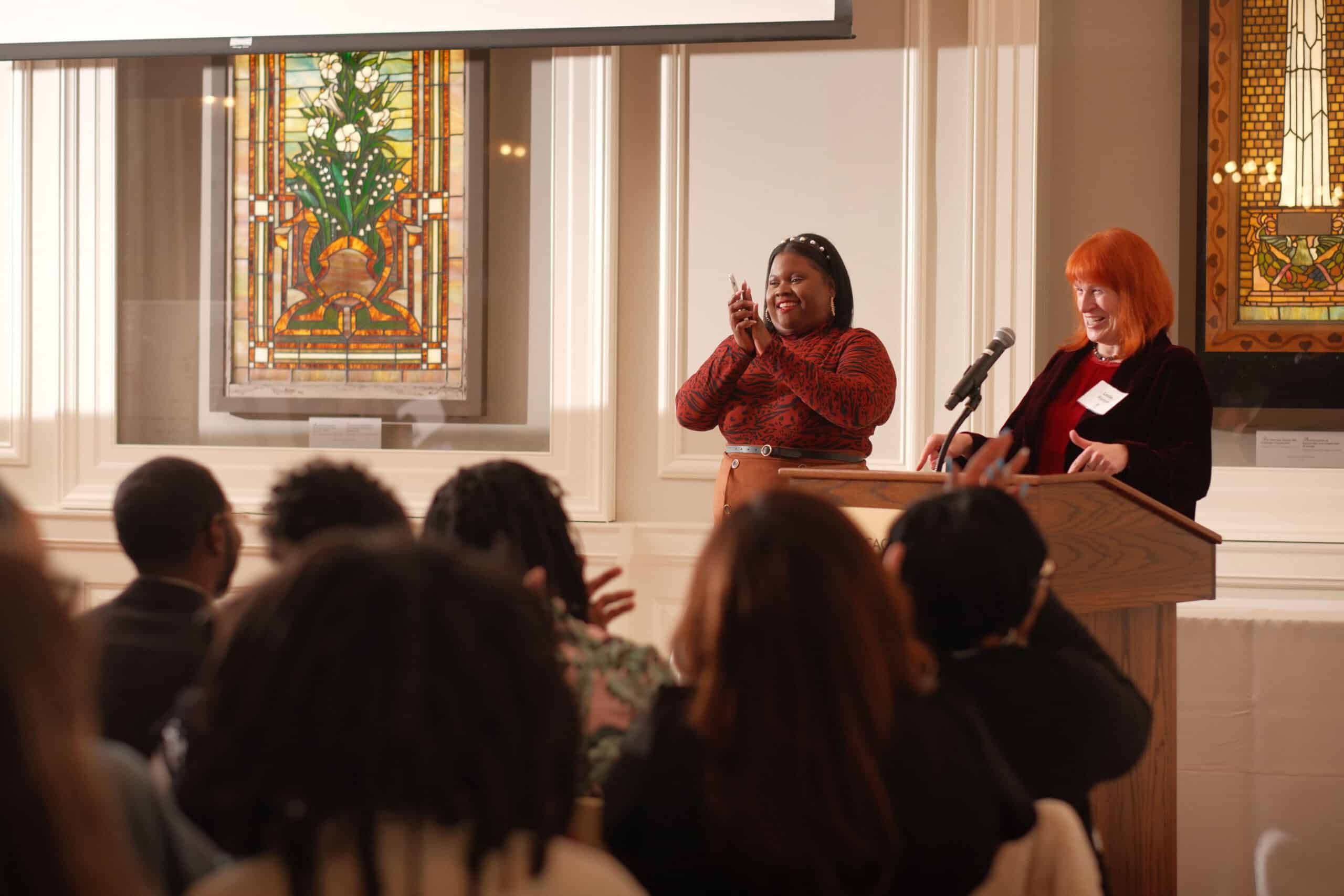
The ceremony concluded with the handing out of graduation certificates. Michael Henderson called the Peace Fellows to receive their certificates and welcomed them as alumni of the program. Upon graduating, the 2024 Chicago Peace Fellows now join the Goldin Institute’s Global Alumni Network which consists of 232 Fellows from over 50 countries around the world.
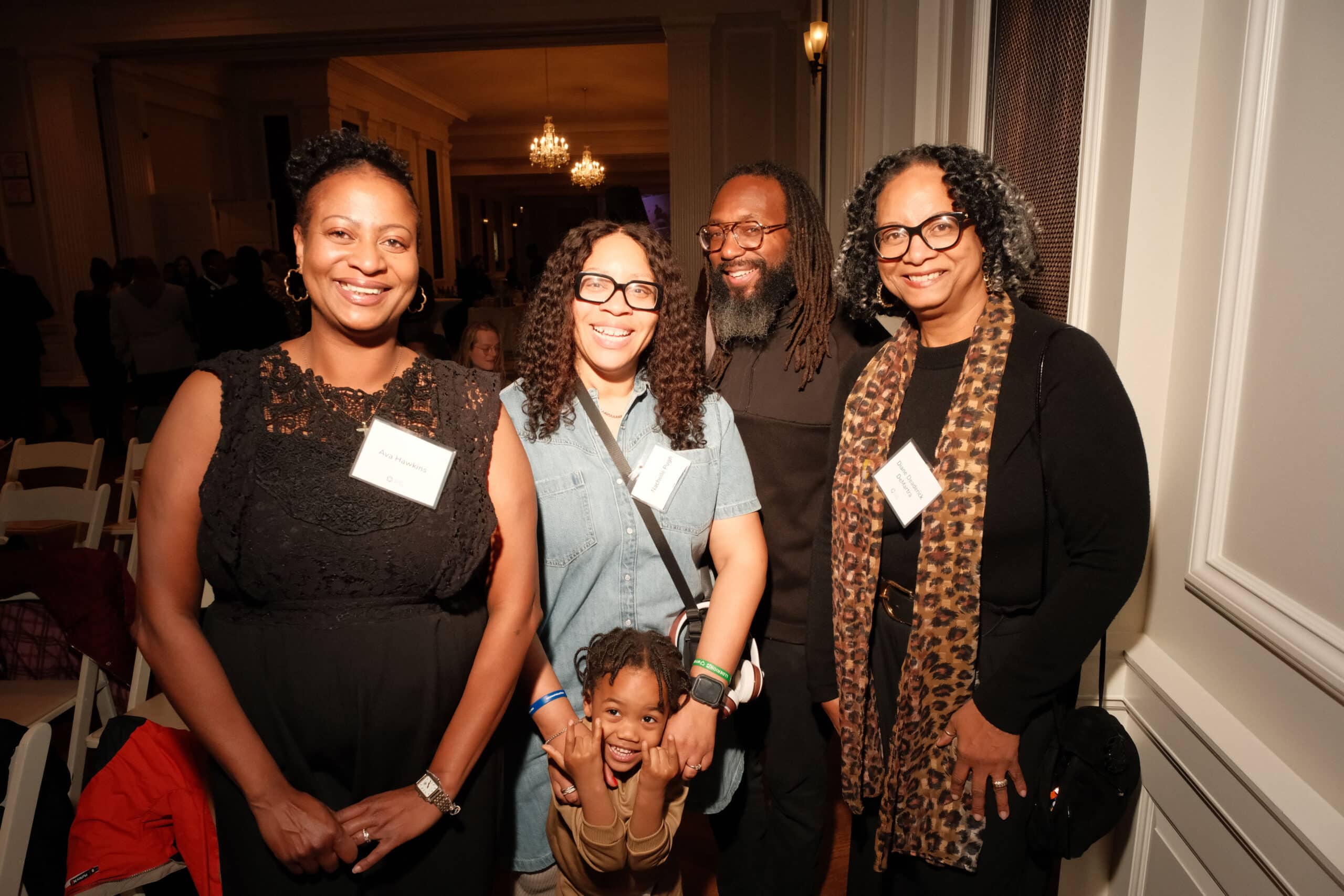
In a retrospective, Michael reflects on his experience leading the 2024 class of Chicago Peace Fellows:
Leading the 2024 Chicago Peace Fellows cohort was a transformative experience, marking my first time in this role. As a proud alumnus from the 2020 class and having directed the mutual aid alumni in 2023, I stepped into this position with a mix of nerves, anxiety, and excitement.
Throughout the journey, I grappled with the fear of the unknown and often questioned whether I was doing things right or striving for perfection.
However, witnessing the cohort's perseverance and dedication was incredibly rewarding; seeing each group successfully completing their peace-building projects and the impact it made in the communities, had a profound impact on me. Hosting the inaugural Chicago and Global meeting, which reinforced our theme of shared learning and showcased the power of collaboration across communities made me a pride leader. Watching them graduate was truly amazing! I believe this journey not only allowed this year’s cohort participants to transform but has also significantly changed me; we have all grown through this experience, truly embodying this year’s graduating theme "Transforming Together."
-Michael Henderson, Director of the Chicago Peace Fellows and 2020 Chicago Peace Fellow
Building a Better Block on 5500 Adams
Antonio “Tony” Daniels has been the President of the Adams Block Club, 5500 since 2012. He moved to the neighborhood in 2009 and quickly got involved in the block club, which has been in existence since 1975. Recently, the Adams Block Club, 5500 has seen increases in community engagement and institutional support. This growth has allowed them to not only refine the annual block party they hold, but also to draw on the perspectives of community members to create and enact new visions for their neighborhood.
Tony’s position as the president of the Adams Block Club, 5500 is directly linked to their annual block party. In 2011, a block party wasn't yet organized and a neighbor asked Tony when it would be. Tony told her to ask Victor Polk, the president of the block club since its founding. The neighbor replied that Victor had told her to ask Tony, who Victor stated was now the block club’s president. Tony then went to Victor’s home: “So I went to his house with my wife and said ‘Hey we want to talk about this block club thing.’ and he said ‘Come one in!’ and goes to a backroom where he has all these papers and starts talking to us about this takeover plan. [...] Over the years, he’s helped me understand why he made that choice.”
Tony took over the Adams Block Club, 5500 during a time of decline. Many of the neighbors who formed the leadership of the block club had moved or were preparing to move and the Austin Community Bank which served the neighborhood had also closed. Tony explains: “From 2012 to the beginning of the pandemic, I was struggling to figure out what our block needed and who I could talk to and focused on building my own cabinet. [...] I really wanted to move away from just doing block parties.”
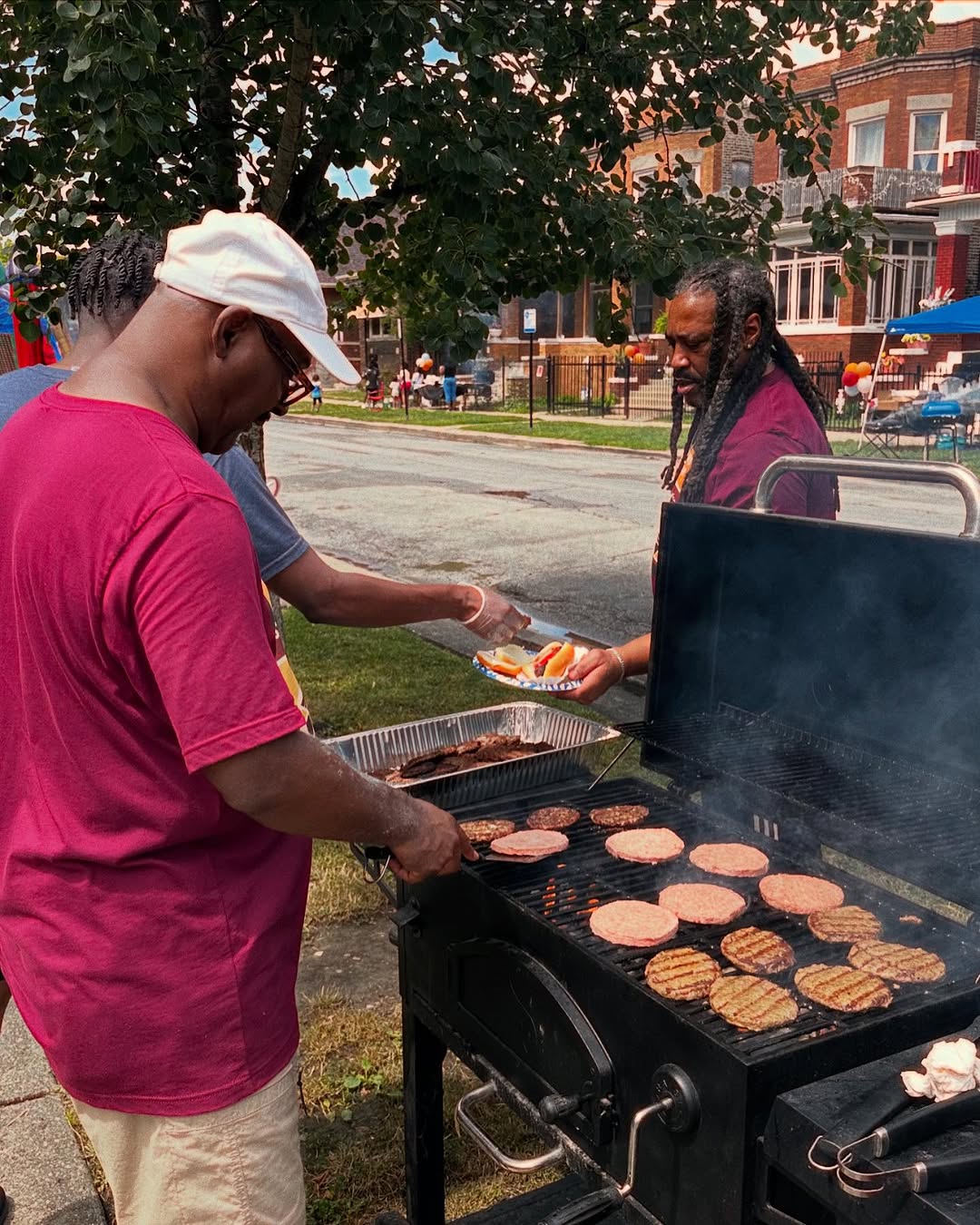
Expanding Beyond the Annual Block Party
In 2020, the COVID-19 Pandemic directed the Adams Block Club, 5500 towards planning programming outside of the usual annual block party. When the block party was cancelled, the block club turned towards figuring out other ways they could discern the needs of neighbors and serve the community. Tony elaborates:
“We had been working with My Block My Hood My City for about two years, they had started doing community clean ups on our block which was new and fresh and [they] invited volunteers to our block who engaged with our neighbors. This got our neighbors to really start thinking about beautification and the things they could contribute to the block, so this swell of energy started to come about. That partnership with My Block My Hood My City also turned into grants for us, which started with a monthly stipend of $100 that we used to keep things in storage. Then we were also able to get other grants that allowed us to purchase chairs and tables and tents, and things of that nature which came from [My Block My Hood My City] and the Chicago Fund for Safe and Peaceful Communities. Between those two we were able to do more on the block, which allowed other people to start vision-casting and thinking.”
Connecting with Neighbors to Build a Better Block
Connecting with the neighborhood by vision-casting and planning community clean ups and other beautification projects taught Tony a lot about community engagement and working with assets. This in turn improved the annual block party as well. Tony elaborates: “This year’s block party was probably one of the best ones we’ve had in my 15 years I’ve been on the block. And it wasn’t because we had a lot of new stuff [...] but it was really because everyone contributed to the ideas of what the block party would look like. This element of this old school block party, allowing people to come out and barbecue in front of their houses, hasn’t happened for a number of years, so people were very engaged.”
Discerning community needs and assets helped the Adams Block Club, 5500 hold a block party that served neighbors, while also generating more value from less resources. One example was food, rather than hiring caterers, neighbors brought out grills to their yards and cooked for the community. This helped save money for other attractions, such as inflatable obstacle courses, waterslides, and bounce houses for children. By creating a designated area for children, with a sign-up sheet and supervision, the block felt comfortable having a separate area that could be catered towards adults and seniors.
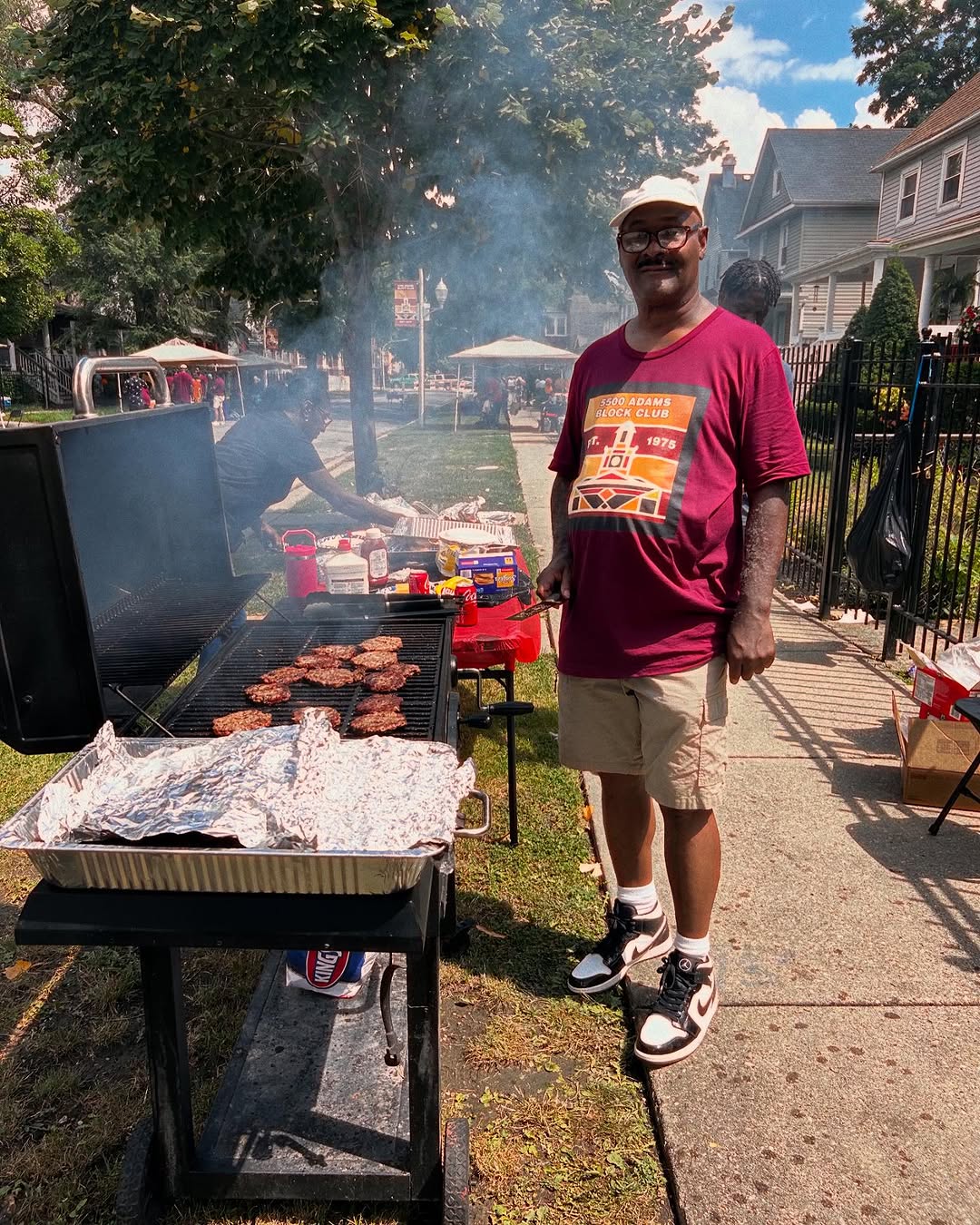
Seniors are a particular constituency in the neighborhood that the Adams Block Club, 5500 is interested in supporting. There are 17 houses on the block that are occupied by seniors and they have communicated that they want to be more engaged, checked in on, and celebrated. For the block party, Tony was able to use his professional connections as the Associate Director of Volunteer Engagement at Breakthrough Ministries to book a live band: “Seniors were super excited. It was more of a concert kind of feel for them, they weren’t out dancing, but they were very engaged.” Outside of the block party, the Adams Block Club, 5500 is also working on a documentary for their 50th anniversary next year to capture the stories of seniors on the block.
By connecting with neighbors, the Adams Block Club, 5500 has also been able to create a more unified culture. As they have expanded, they have used new resources to help fuel that culture by creating a common branding that is used throughout the neighborhood. That includes creating new yard signs, street banners, and t-shirts. This year, funds from the 2024 class of Chicago Peace Fellows were used to purchase block club t-shirts: “We did the t-shirts because we wanted them to feel like they’re a part of something and that there is unity there. Same with the banners and same with the block club sign. It gives a uniform feel and a clear indication that we’re unified.”
Creating a unified culture and building on assets has helped the Adams Block Club, 5500 support families and build community on their block. This collaborative effort has relied on input from neighbors on the block and support from local organizations. Through hosting block parties, sharing resources, conducting community clean ups, and seeking the perspectives of neighbors, the Adams Block Club, 5500 has promoted peace, unity, and beauty on their block.
Building Inclusive Mental Health Support on the West Side
Edwin Martinez is the Co-founder & Executive Director of Centro Sanar, a place dedicated to addressing the impact of violence and trauma happening on the Southwest side of Chicago. In this article he shares more on the organization’s work, activism, and how crossing paths with Goldin Institute in 2022 allowed him to expand his network and community impact. Speaking from his experience in providing mental health care to adults and families in Brighton Park, Gage Park, Little Village, and Back of the Yards. Edwin highlights that there is no streamlined approach to crisis management for an acute form of trauma, such as homicidal gun violence.
Initially, he speaks about the multilayered challenges that survivors of gun violence face in their journey toward mental health recovery, and how these two things relate. “This issue intersects, for instance with undocumented populations, or people that are not working, lose work right after the loss of a loved one, or after a gun violence incident, we're talking about access to insurance- and having it is helpful. Different programs are three to six months out, but what happens after their insurance is terminated because it's not working? So, this impacts a person's ability to seek health services, especially in terms of their age, in terms of whether they identify as an adult or a child, but also in the sense of are they insured, are not insured, things of that nature, and also where do they live?” He adds that it’s crucial to have a targeted approach to gun violence in areas where most likely violence would occur and a public mental health approach for sustainable healing resources.
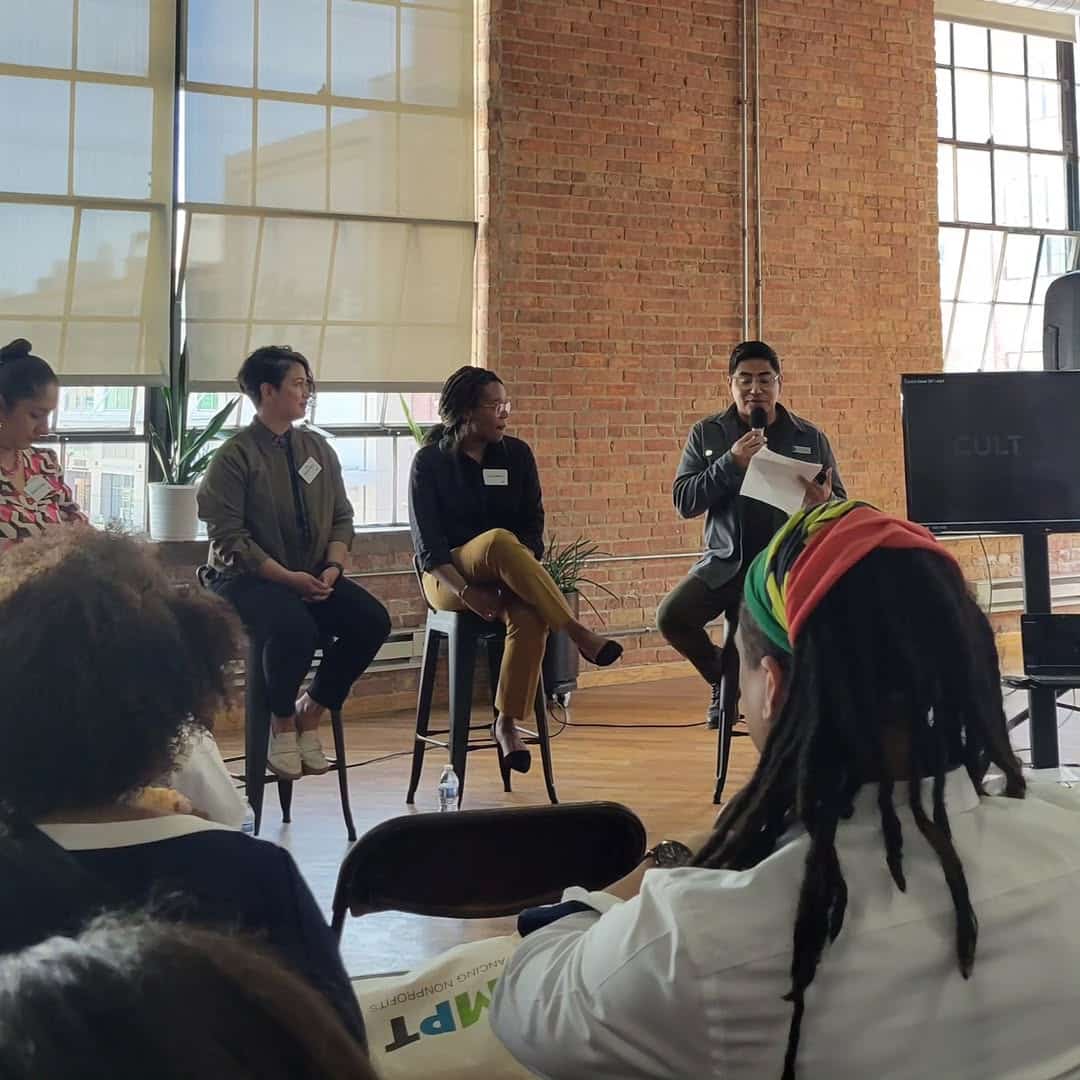
"Youth come from somewhere. And if youth is a reflection of the family, of the community, if you center healthy parents, you also center healthy youth."
-Edwin Martinez, Executive Director of Centro Sanar
Further, Edwin stresses the importance of addressing basic needs—such as financial stability and housing—before mental health services can be effective, emphasizing that healing begins with meeting these foundational needs. “If survivors were to be able to be stabilized in a financial, safe way that is not associated to quote-unquote mental health, it's interconnected for sure, but if the person can access resources, not a housing perspective, not a food perspective, on all these different things, our mental health will be, we would be able to do our job more effectively, less therapist.”
On Healing and Finding Better Help
Speaking on what healing looks like, he briefly elaborates on the meaning of the word. “I compromise on what healing looks like. A person’s mental health would be better if we had systems in place that address their immediate needs. If someone is touched by gun violence, there’s financial support or reimbursement in place to make the giving process a lot better. So, they don’t also have to worry about having food.”
"The healing process is addressed when the person does not feel isolated."
-Edwin Martinez, Executive Director of Centro Sanar
According to him, when a person is impacted by gun violence or homicide, some financial reimbursements can be helpful, but it's still complicated to navigate. “As an example, if a person were to be able to expedite the victim's comp reimbursement for their funeral, for loss of employment, for guaranteed rental income, that would make the healing process a lot better.”
He emphasizes that when thinking long-term, and not just about individual therapy, you're looking at a more robust system- a system that is strong reliable, and able to withstand disruptions. “Then, it is a system where it incorporates family therapy, couples therapy, group therapy, or social support. When a homicide occurs, specifically, that impacts the surviving mother, as an example, you just had a group yesterday, that impacts the surviving mother's ability to connect with surviving children.”
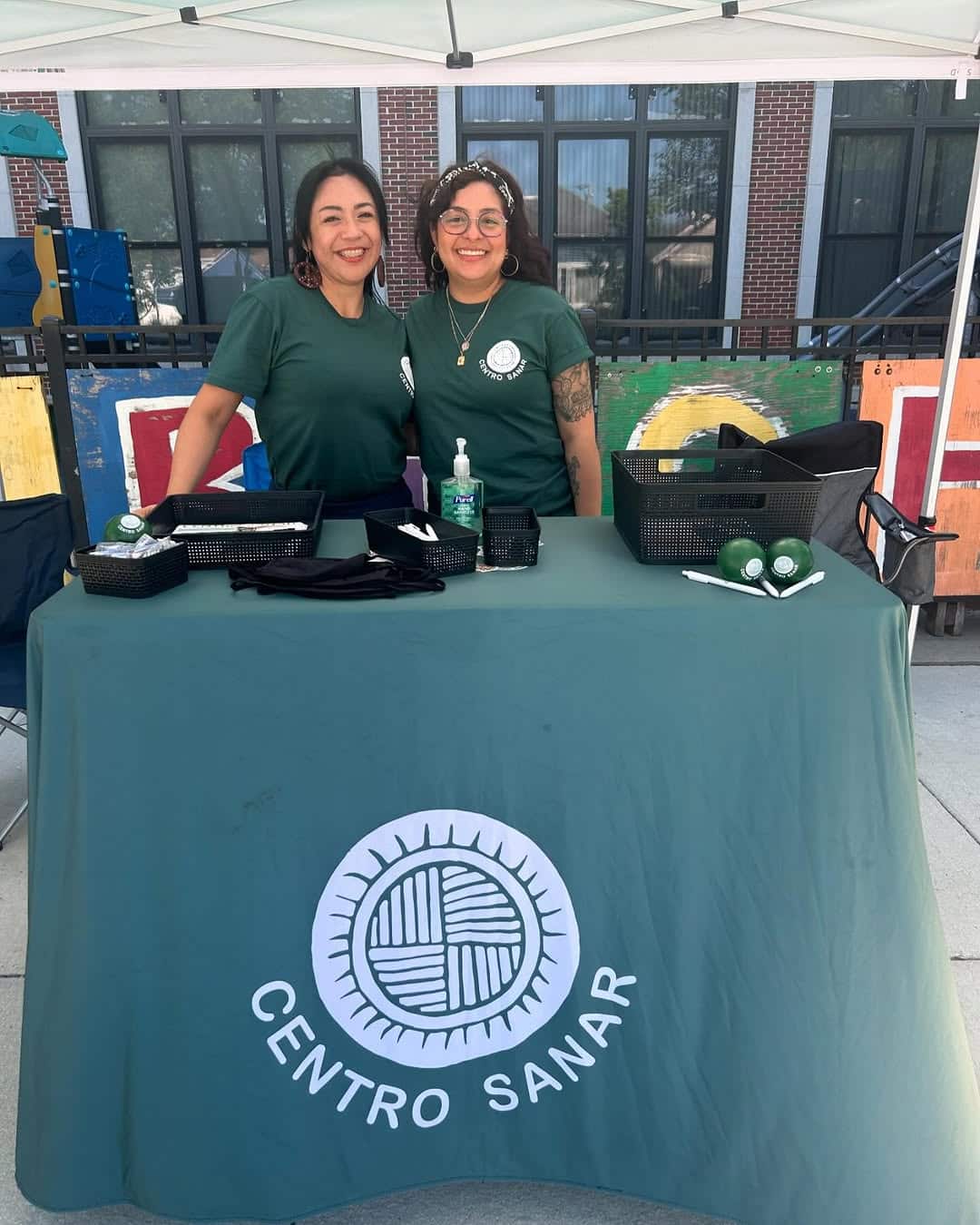
Creating Inclusive Mental Health Solutions through Collaboration
Acknowledging the vital importance of Centro Sanar in advancing and providing free clinical services to Chicago's South West Side, he touches upon how the organization addresses the complex trauma experienced by gun violence survivors.
We've observed that a public mental health center is crucial, especially for families affected by homicide, who often face insurance instability. These challenges must be considered when developing sustainable approaches to care. This aligns with Centro Sanar's commitment to addressing systemic issues in public access to mental health services, ensuring that our approach remains focused on long-term solutions."
Edwin also reflects on his time as a Goldin Fellow, emphasizing the value of connecting with fellow activists to develop more inclusive mental health solutions. "I continue to stay connected with my Goldin Global cohort, particularly those who are nearby, like Guillermo Gutierrez. This network offers us a chance to reflect on our experiences, challenge one another, and collaborate on addressing key mental health issues. Each of us comes from a different community, and our perspectives- especially in areas like Chihuahua- are invaluable in shaping a more comprehensive approach."
He concludes by urging a shift toward mental health structures that are not only responsive to immediate needs but also designed to support long-term healing and prevention.
You can help Edwin to achieve the goal of developing a community mental health model that provides an alternative to the current mental health industry, by donating to Centro Sanar.
Summer Cool Down Brings Community Fun to Washington Park
On July 13, The Paving the Way Project hosted their 9th annual Summer Cool Down. The Summer Cool Down was an event designed to promote fun and safety in the Washington Park community and was supported by the 2024 Chicago Peace Fellows as part of their Summer Projects. Planning for the Summer Cool Down was led by 2024 Chicago Peace Fellow, Antonio Davis, the Founder and Executive Director of the Paving the Way Project.
The Summer Cool Down was part of this series of Summer Projects organized and hosted by the 2024 Chicago Peace Fellows to apply lessons learned through the GATHER curriculum to build peace within their communities. Throughout their fellowship, the Chicago Peace Fellows had a series of planning meetings where they set the scope of their Summer Projects: determining which beneficiaries to target, choosing potential community partners, and drafting a program. After determining projects and team members, the Peace Fellows voted on how to spend a shared stipend across various projects and then met on their own to plan. The 9th Annual Summer Cool Down was one of the projects that the 2024 Fellows voted to fund, alongside six other shared projects.
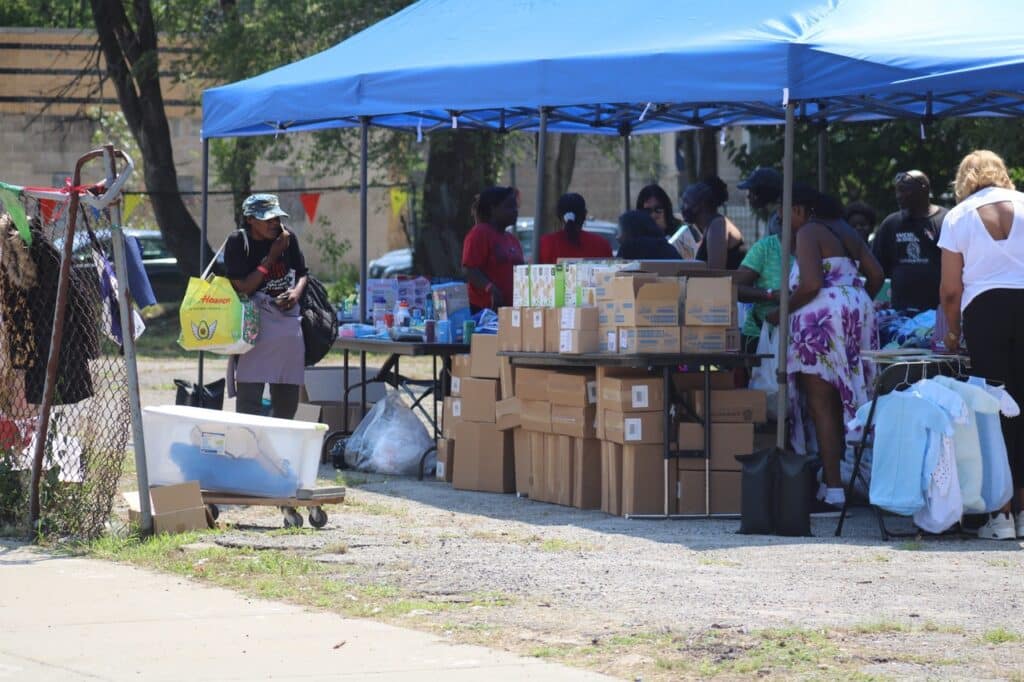
History of the Summer Cool Down
The first Summer Cool Down was held in 2015 and was also organized by Antonio and the Paving the Way Project. Initially, the event served as a way to reduce tensions between two rival gangs that were affecting community members. Antonio describes the situation: “It started in front of my church. We were smack in the middle of two gang territories and at the time when we first started [the Summer Cool Down] they were fighting.” Antonio was able to communicate with members of both sides and find out that they each had something that the other was lacking: one side was interested in using a park and basketball courts that were in the other side’s territory, and the other side was interested in using a mall that was in opposing territory. Antonio saw this as an opportunity to ask: “How can we deal with this? How can we make our space a neutral ground?”.
Antonio was able to use the self-interests of both gangs to create a safe space where they could work on resolving their conflicts. The event started out small, with a basketball court and waterslide for members of the community to use. However there still wasn’t a lot of interaction between the two sides, so Antonio addressed them: “It started out hard because one side would come and once they left the other side would come. So I said ‘Come on y’all, I kept my promise so I want y’all to keep your promise, so interact.’ So then we created a basketball tournament with a cash prize, [...] which at least got them together to play basketball.” The event ended up being a success, with 50-75 members of the community coming together, including community members not involved in either gang. As a safe space was starting to be established, Antonio knew he could scale the event up further.
Our attendance started growing from 100 in attendance, to 200, to 300, until this year when we topped it with 500 in attendance. It has become a staple and a tradition for our organization and the community. The kids look forward to it and the parents look forward to it.
-Antonio Davis, Founder and Executive Director of The Paving the Way Project, 2024 Chicago Peace Fellow
The Summer Cool Down has steadily grown since, and now serves a much broader audience. After the first two years, Antonio felt like there was no longer a need to hire security, and instead spent more on attractions. While the initial event may have revolved around resolving neighborhood conflicts, the Summer Cool Down now revolves around creating a safe and fun environment for the Washington Park community.
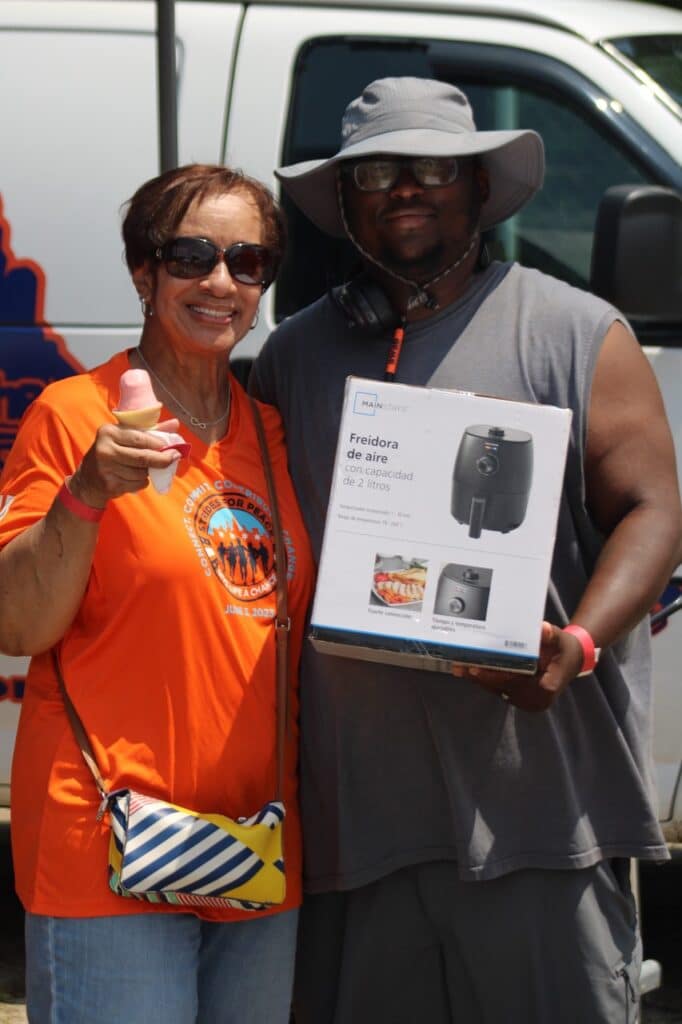
Fun and Resources for the Community
At the Summer Cool Down, there is a combination of free entertainment and resources for the community. Each year, Antonio finds more water slides, jump houses, and carnival rides to add to the event: “The carnival doesn’t come to this neighborhood, so I’m going to turn this into a carnival.” Other organizations are also invited to share resources with the community: “The third and fourth year we started adding resource partners to come serve the community, so having thirty resource partners this year was hot.” Organizations provided a range of offerings, including insurance options, mental health resources, job resources, health resources, and more.
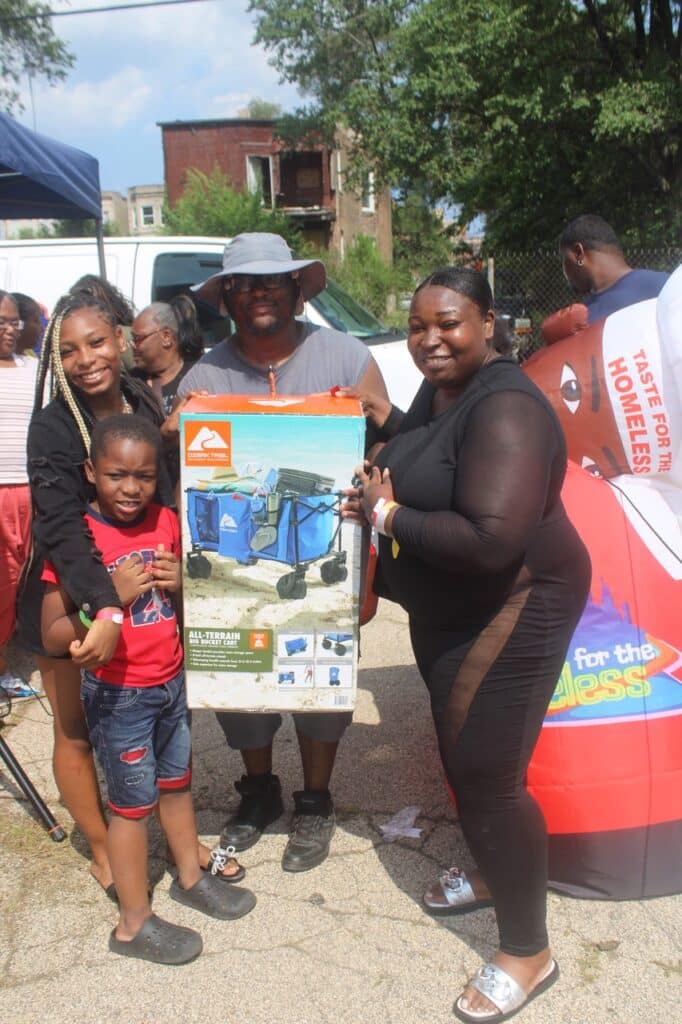
I’ve always striven to not charge the community…before I started my organization I was a problem child, so this is one of the ways of giving back to the community that I hurt.
This year was also the first year that the City of Chicago was involved in the event. Antonio met some city officials at a Task Force meeting about community development in Parkway Gardens and learned that the city can help events with essential planning such as tables, port-o-potties, barricades, and other amenities that he usually pays for. “Now every year we will have some items we will get from the city. I was also able to share those resources with my community partners for their events.”
Over the last nine years, the Summer Cool Down has grown into a staple of the Washington Park neighborhood, providing a safe place for families to have fun and come together as a community. Antonio emphasizes: “The biggest thing accomplished through the Summer Cool Down was safety and fun. You want to come to an event where there are no problems, where you can let your kids be kids, where you can relax. I think we have accomplished that in the nine years where we have been doing this.” In the coming years, Antonio would like to see the Summer Cool Down continue to grow: “For the tenth anniversary, I want to hold the Summer Cool Down in Washington Park. That would not only give access for more attendees, but would give me more space for all of the things that I can bring to the community, such as a stage and live entertainment.”
Chairs as Activist Art
Throughout the history of the Goldin Institute, many Peace Fellows have used art as a way to bring communities together, reflect, and create. Jamika Smith, a 2022 Chicago Peace Fellow and the founder of Teena’s Legacy, uses a unique medium to promote these kinds of practices, teaching the art of upholstery as a tool for healing and community activism. Recently, Jamika has worked on two substantial projects, collaborating with community members from the Black and Latino community to use re-upholstery as a tool to explore their history and facilitate healing.
Chairs that Explore Black History: Blooming Out of Trauma
For Black History Month, Teena’s Legacy hosted their very first art exhibit, “Blooming Out of Trauma: The Intersection of Upholstery and Activist Art.” The exhibit was hosted at the Marshall J. Gardner Center for the Arts in Gary, Indiana from February 2 through March 8. For this exhibit, Jamika worked collaboratively with community artists to create fourteen works that trace a peoples’ history from the African Empire and slave trade, through Jim Crow and Civil rights eras, to contemporary experiences. Speaking to the collaborative nature of the exhibit, Jamika stated: “I intentionally wanted this to be a collaborative project, so I [brought in] a couple of artists from Chicago, an artist from Hammond, Indiana, and a majority of artists from Gary.”
Blooming Out of Trauma aimed to capture both the struggles and achievements of African and Black History. Speaking to her inspiration for the exhibit, Jamika said: “A lot of my chairs, especially when I do my workshops, are more about purpose driven pieces, designed with intention. This exhibit is what that is, I intentionally designed an exhibit to tell the story of African and Black history using some authentic cloth from Ghana and Mali. The story starts from the birth of slavery in the 1400s all the way up to the present day. The name ‘Blooming out of Trauma’ captures that for well over 400 years there were traumas and struggles, yet there were also triumphs out of those.” Through working with African materials and reflecting on African and Black history, the artists who contributed to Blooming Out of Trauma created chairs that provide a space to process that history.
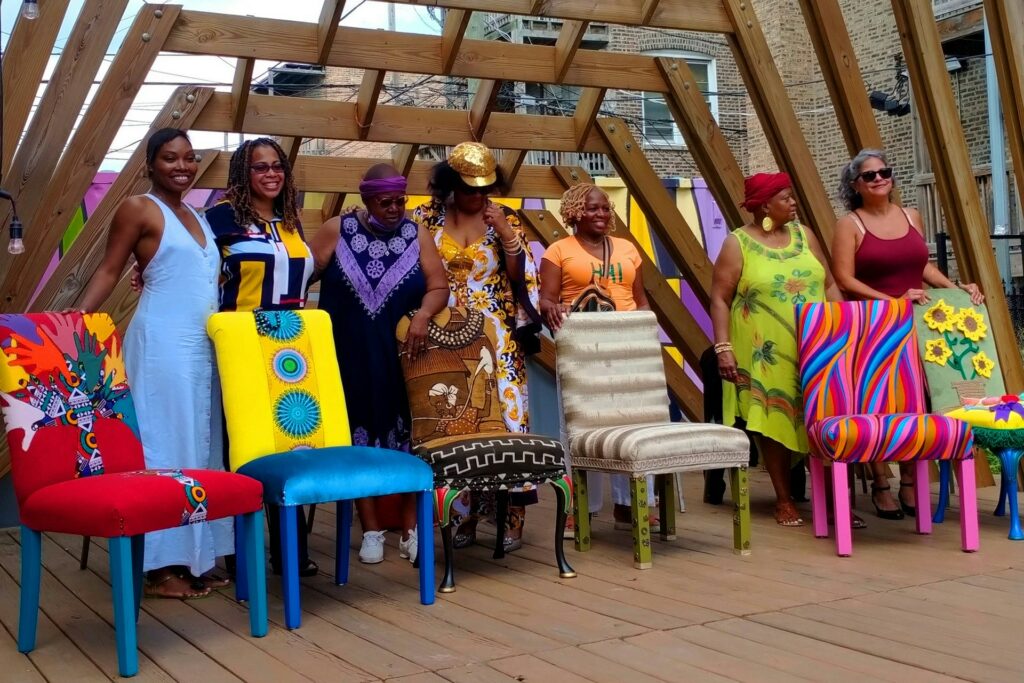
As Jamika and the other artists worked on chairs for Blooming Out of Trauma, they also processed their own personal histories. Jamika elaborates, “I learned more about my history through this project, especially the history that is not taught in schools or books. Even history that our ancestors or family members may have been uncomfortable or ashamed to tell. That history is hidden.” Continuing to reflect, Jamika stated that upholstery teaches: “First, to have patience to assess that there is trauma, and then second to identify and put a name to that trauma, and third, how do you compartmentalize or release that trauma; how do you put it in its proper place.” Through reflecting on personal histories and struggles, Blooming Out of Trauma seeks to allow a space for trauma to be processed.
The way Jamika approaches upholstery centers the experience of individuals and upholstery’s role in connecting groups of people through their experiences. Speaking to the collaborative nature of her work, she says, “It is so much better doing stuff with other people and not solo. You get to learn so much more about individuals’ personalities, passions, desires. When it comes to art, you also learn about their struggles and challenges when it comes to monetizing their art and how challenging it can be to connect their art to the mainstream.” For Jamika, upholstery is a reflective process: “Upholstery can be tedious work, especially since you work with your hands, so students tend to get frustrated through the process, just to come out of the process with a better understanding of who they are as individuals. If you’re impatient with this chair, where else are you impatient? Are you impatient with your health, finances, etc.” Through the process of upholstery, individuals come to a greater understanding of themselves, their history, and their community that can be shared through works of art.
Exploring Assets in the Latino Community: A Seat at the Table
Jamika has also partnered with the Illinois Legislative Latino Caucus Foundation, where she worked with 17 artists from community areas represented by members of the Illinois Legislative Latino Caucus to create chairs representing their community areas on a project called “A Seat at the Table.”. For this project, Jamika joined with Dr. Patricia Novick, a 2023 Goldin Global Fellow, who guided the artists through an Asset Based Community Development training, while Jamika hosted workshops walking the artists through the process of designing and creating a chair that tells the story of their district. Afterwards, the chairs were auctioned at the ILLCF’s annual gala, where $1 million was ultimately raised for their scholarship program.
Artists in the workshop came from multiple generations and represented multiple community areas, but came together to imagine ways in which their communities could be represented through chairs. Jamika emphasized the way the artists were able to join together as a community: “17 artists went into the workshop without really knowing each other that well. And it was an intergenerational group from 16 years old to 65. […] The idea was that even though they did not know each other, they all came into this one space as if they were family.“ Each artist was also allowed their own voice and aimed to capture something about their community. Jamika continued: “Each Chair had a foundation of community, but it was told in 17 different ways. That was the most powerful part about it: it was about community, building, and collaboration, but each one of them had their own separate voice in displaying what it meant for them.”
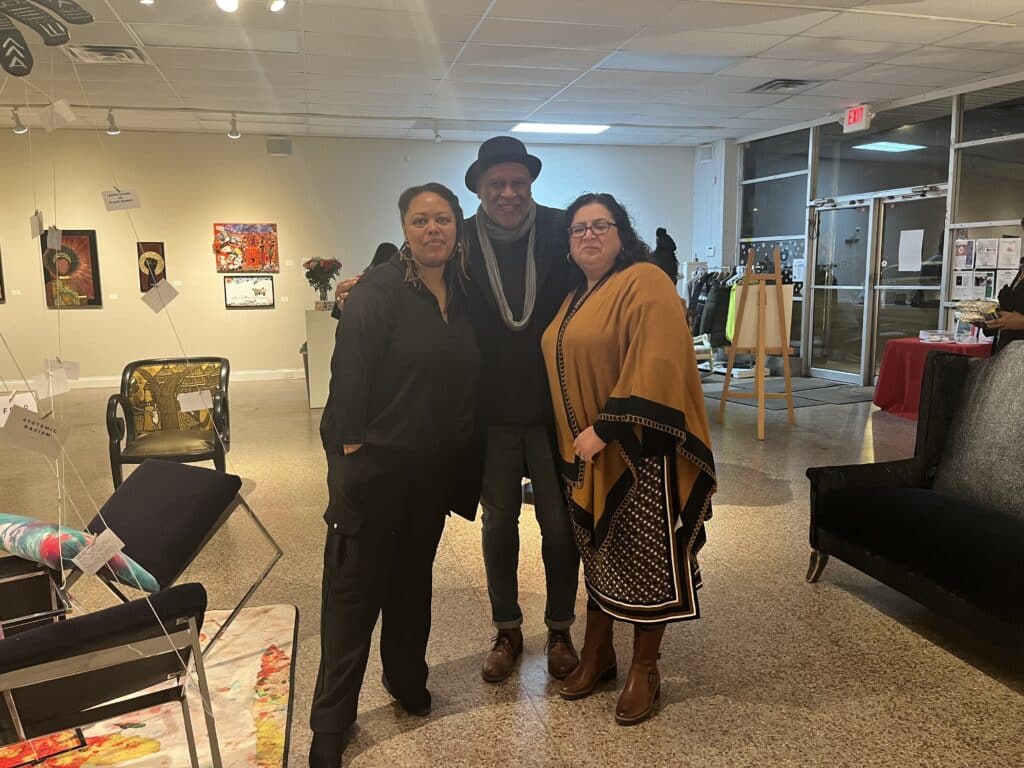
The artists who worked on a Seat at the Table aimed to showcase a variety of Latino experiences that depict a rich culture. Madison Cervantes, created a chair representing the first senate district and notes: “The butterflies I put on my chair represent all of the immigrants within the 1st district. I wanted to use different materials for their symbolic meaning. Latinos, we are everywhere and we know how to use many different materials and we venture out and I just wanted to represent that we are not linear people.” Silvia Morales created a chair for the 23rd congressional district that incorporates items from vendors in her community: “I wanted to include a lot of aspects of our community as hard workers, but also as people, people who need to rest.” Through reflecting on these chairs, both the artists and community members are asked not only to think of the Latino community, but also assets within that community that can be used to build strength.
This year, Jakima hopes to launch another project similar to A Seat at the Table and collaborate with organizations across Chicago. She imagines creating Peace Circles, identifying topics, and addressing current issues to guide upholstery workshops. As seen through both Blooming Out of Trauma and A Seat at the Table, these workshops would provide spaces for artists to work with their communities to explore their histories, identities, and assets.
Meet the 2024 Chicago Peace Fellows
The Goldin Institute invites you to learn about each of our 2024 Chicago Peace Fellows representing 14 community areas across the city. Founded in 2019 in collaboration with the Partnership for Safe and Peaceful Communities, the Chicago Peace Fellows program is the only leadership development program that is built by and for grassroots community leaders on the South and West sides of Chicago.
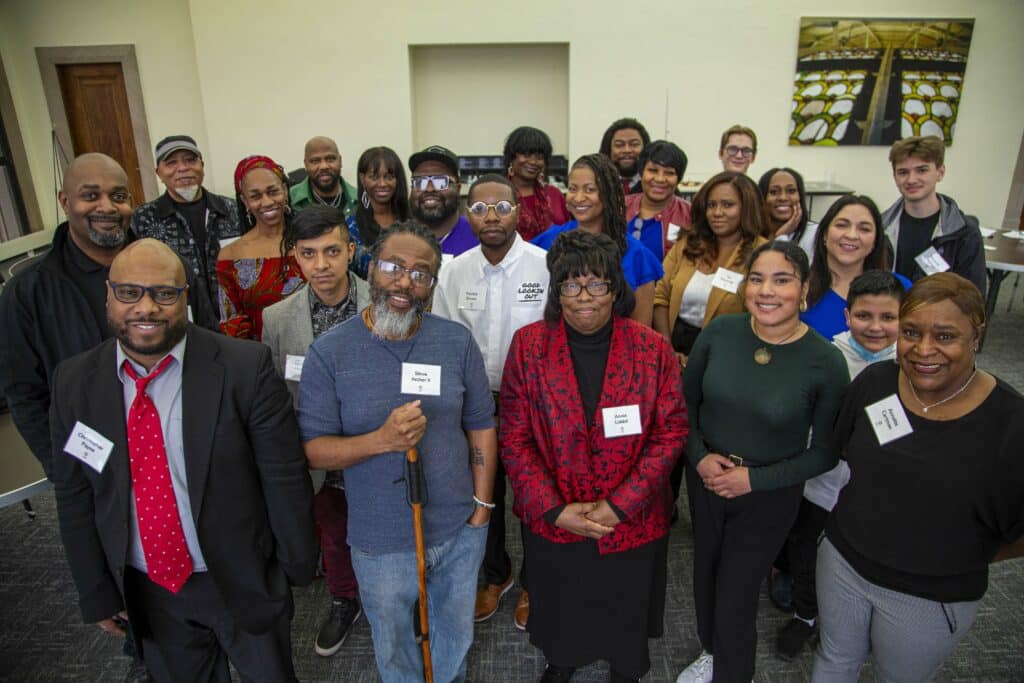
ABOUT GATHER
Peace Fellows participate in GATHER, an online asset-based community engagement course, as well as in-person training, collaborative action projects, and networking experiences with civic leaders, academic researchers, and policy makers. The Chicago Peace Fellows reduce violence by building relationships, engaging youth, collaborative peace building projects over the summer and by creating new networks among residents, families, schools, and nonprofit organizations.
The Fellows are learning together through GATHER, which is both a mobile platform for shared learning and a curriculum for people who want to build on the talents of their neighbors and the assets of their communities to make real and lasting change. Gather Fellows learn and work together through an innovative curriculum that comes pre-loaded on a tablet device with all the connectivity, materials, videos, practices and tools necessary to provide a mobile classroom and toolkit for community leadership.
The Chicago Peace Fellows project connects and equips cohorts of past grantees of the Chicago Fund for Safe and Peaceful Communities to reduce violence and promote peace. The 2024 Chicago Peace Fellows is the sixth all-Chicago cohort to utilize the GATHER platform, an online learning hub built by the Goldin Institute to empower grassroots leaders.
The Chicago Peace Fellows will engage in a 30-week course of intensive shared learning as well as group projects, culminating in a graduation event in November, 2024. The curriculum has been designed in collaboration with the grantees themselves, based on their practical knowledge and hard earned wisdom, with input from a wide range of civic leaders. Fellows will reflect on their past summer work, identify successes and lessons learned, and improve their abilities by sharing strengths and learning new skills.
The Goldin Institute and the Partnership for Safe and Peaceful Communities have aligned missions that value authentic community leadership. The Chicago Fund is uniquely effective at finding motivated problem-solvers and community-builders. By connecting Chicago leaders through GATHER, their efforts to nurture safer and more peaceful communities will be more effective, interconnected and lasting.
OUR PARTNERS
A special thanks to the Chicago Community Trust, the Conant Family Foundation, the Frankel Family Foundation, the MacArthur Foundation, the Polk Bros. Foundation, the Racial Justice Pooled Fund, the Seabury Family Foundation, and the Partnership for Safe and Peaceful Communities for making this program possible.
To follow along the learning journey with the Chicago Peace Fellows, please sign up for our newsletter and follow up on Twitter, Facebook and Instagram.
Civic Engagement Program from Ladies of Virtue Will Empower Black Girls
Jamila Trimuel, the Founder of Ladies of Virtue (LOV) and 2019 Chicago Peace Fellow, speaks to the Goldin Institute about the recent funding that LOV received from the Girls Opportunity Alliance, a program of the Obama Foundation, for their Fannie’s Fight for Freedom Program. This innovative civic engagement program is awarded 50 thousand dollars to launch new LOV Clubs in the South Shore community and support their annual Black Girls Rest event at South Shore High School.
Trimuel elaborates on how this initiative supports girls in Chicago, acknowledging they are powerful change agents deserving of their own space in the community. She highlights how this program encourages girls to fight for what they are passionate about and encourages them to vote and be a part of democracy.
She also reflects on her participation in the Chicago Peace Fellows, emphasizing meaningful cooperation that originated from this experience as a symbol of how Goldin Institute connects activists and creates bridges between them.
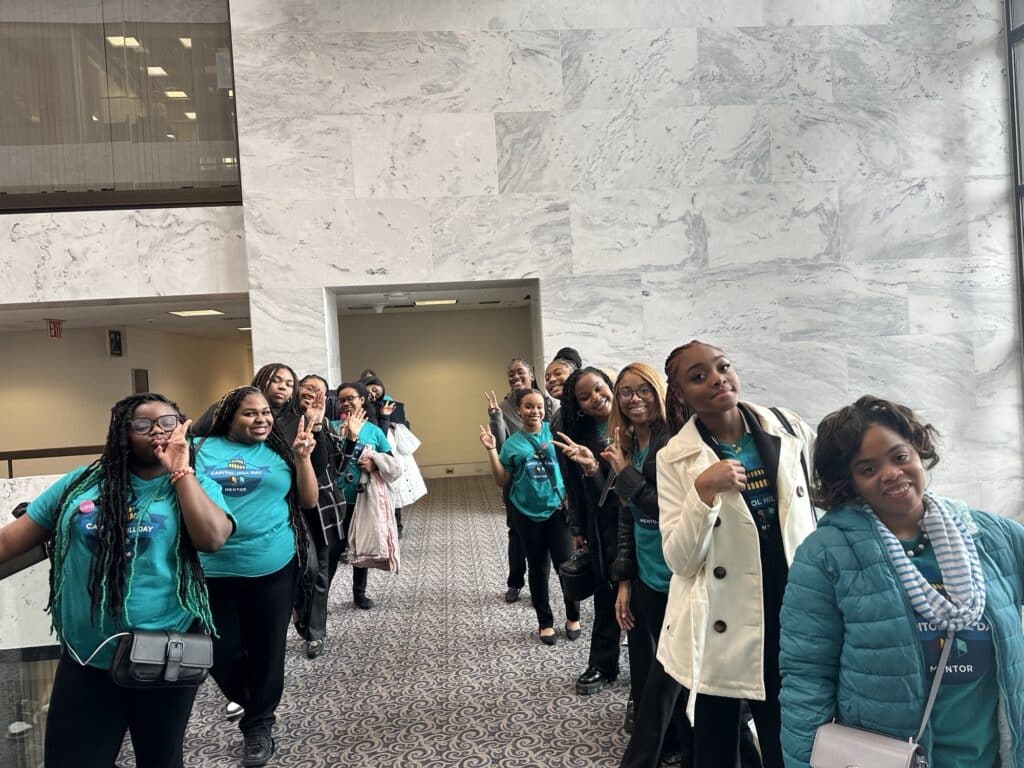
A Program Strengthening Girls’ Voices
There are three parts of Fannie’s Fight for Freedom Program: Workshop, Capitol Hill Day in Washington D.C., and creating awareness via social media. “In the workshop, our girls had the chance to watch a documentary about Fannie Lou Hamer, and they had the opportunity to speak to women who are fighting for issues in our community.” Jamila says.
The workshop was a well-crafted and thought-provoking event that significantly impacted the attendees. The icebreaker activity and documentary screening of Fannie Lou Hamer (1917-1977), an African American civil rights activist on which the program is based, were engaging and informative. “Fannie Lou Hamer was someone who fought for women's rights, and we wanted our girls to be aware of their history and some of the struggles that black women had to go through to be where we are today.”
"We heard from many girls that this was their first time hearing of Fannie Lou Hamer and that they like hearing and learning more about black history and women’s rights activists. They also highlighted they are positively impacted by learning about the history of our leaders."
-Jamila Trimuel
The second part of this program was traveling to Washington, D.C., where the participating girls met with elected officials and representatives from their states. Many of the girls had never been to D.C., and visiting historical landmarks and sitting in elected officials' offices was a significant experience. The three meetings successfully introduced LOV as a leading Chicago-based mentoring organization for Black girls, allowing the youth the space to advocate for mentorship. “We were honored to be present and be a representative of all youth voices in Illinois.” Jamila says. The last component is the leadership projects, where 26 girls from Chicagoland, most from the South, will work on some issues they are passionate about.
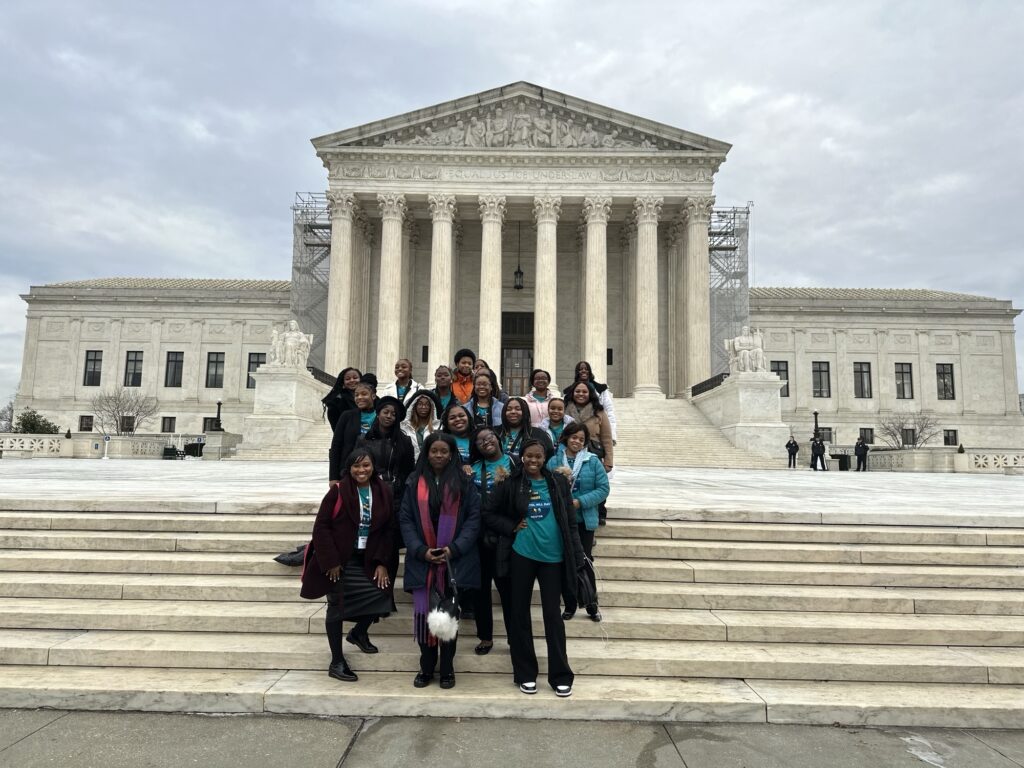
How Ladies of Virtue is Addressing Women’s Challenges
For more than 12 years, an essential aspect of LOV’s work and activism has been empowering Black girls in some of Chicago’s most under-served communities. While talking about some of the most pressing issues and challenges faced by women in Chicago nowadays, Jamila also elaborates on what LOV is doing to address those issues.
"One of the issues that black girls face is high disciplinary and suspension rates in Chicagos’ schools. Further, among these challenges stand depression and social anxiety. We are combating these issues in various ways. One is by incorporating mental health workshops in every program we offer, free of charge. We also offer one-on-one as well as small-group therapies."
-Jamila Trimuel
She further talks about how mentorship opportunities they offer, one-on-one and group mentoring, have proven to bring benefits. “We know mentoring encourages girls to go to school to become more successful. When they see women who look like them, they know that they too can achieve their goals.” Mentoring includes someone checking up on the girls and helping them navigate their career opportunities. “Mentoring is where the girls engage their mentors. They also have mentors outside the session. They can go to games and participate in activities outside our organization.”
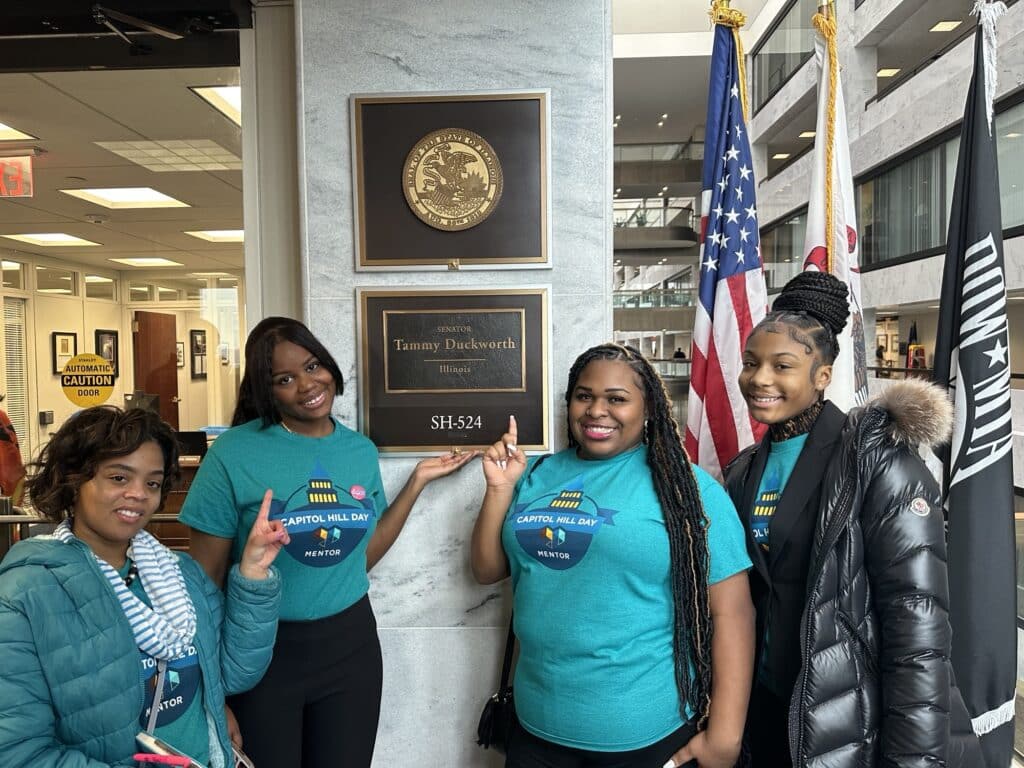
Chicago Peace Fellows - A Meaningful and Lasting Experience
When speaking about her experience as a Chicago Peace Fellow, she recalls a partnership that stemmed from her time as a Fellow. “One thing I enjoy even to this day is that we partner with the Imani Community Development Corporation for our LOV Day initiatives. This is an event where we provide self-care experiences for Black girls in the South Side of Chicago.” Jamila met Dawn Hodges, Executive Director of Imani Community Development Corporation, during their participation in the 2019 Chicago Peace Fellows program. “My time with Goldin Institute was very comprehensive. Goldin Institute does fantastic work with NGOs. During the Chicago Peace Fellowship, we had the chance to meet other non-profits funded by black and brown people who are actually in the ground making an impact.” She says this focus on grassroots leadership was something different from the other fellowships she was part of.
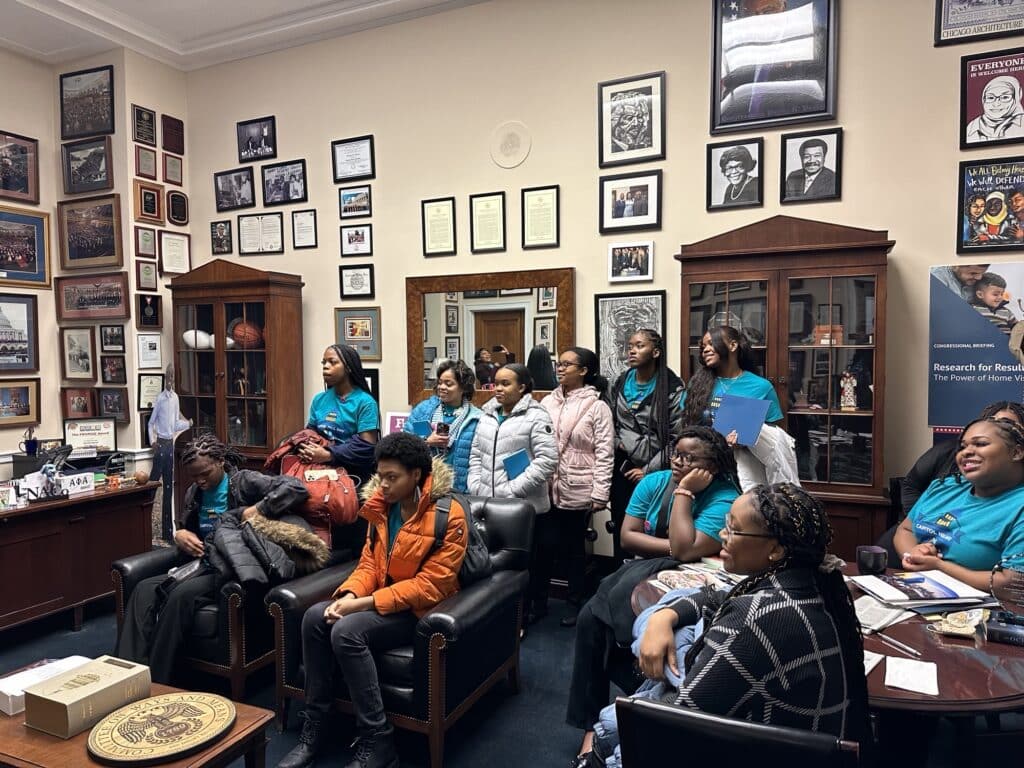
Click here to donate now and support the community activism of LOV.
Storytelling to Build Community: 2023 Peace Fellows Hold Speak Your Peace Workshop
Storytelling serves as an important medium for many Chicago Peace Fellows to raise awareness and promote solutions to problems that they face in their community. On October 21, the 2023 Chicago Peace Fellows hosted the Speak Your Peace workshop, dedicated to building power and community through inter-generational mixed-media storytelling. The event was held at the Chicago Center for Arts and Technology (CHICAT) on the West Side of Chicago. Peace Fellows on the Speak Your Peace team included: Nachelle Pugh, Antwan McHenry, Kanesha Walker Amaro, Carlil Pittman, Devonta Boston, Alexandra Auguste, Zahra Glenda Baker, Diane Deaderick DeMarta, Ceola Henderson-Bryant, and Lauryn Collins.
Speak Your Peace was one of a series of Summer Projects organized and hosted by the 2023 Chicago Peace Fellows to apply lessons learned through the GATHER curriculum to build peace within their communities. Peace Fellows participate in GATHER, an online asset-based community engagement course, as well as in-person training, collaborative action projects, and networking experiences with civic leaders, academic researchers, and policy makers throughout the year. These lessons culminate in a series of planning workshops where Peace Fellows can apply their newly learned skills and connections to a summer project that builds on the talents of their neighbors and the assets of their communities to make real and lasting change.
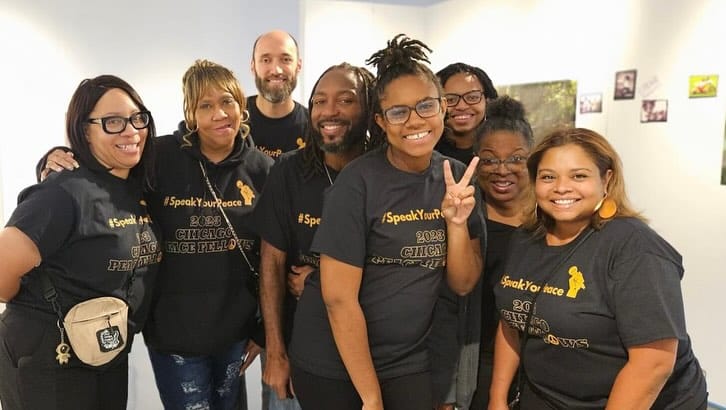
Throughout their fellowship, the 2023 Peace Fellows had a series of planning meetings where they set the scope of their Summer Projects: determining which beneficiaries to target, choosing potential community partners, and drafting a program. After determining projects and team members, the Peace Fellows met on their own to plan. “We were all sitting at the table and picking these projects, and our group felt it was really important for people to tell their story".
"In our community there are so many different things that go on, some of which are great and some of which are harmful and violent. We wanted to give people an opportunity to think about those things so that we can build on their experiences and make changes.”
- Nachelle Pugh
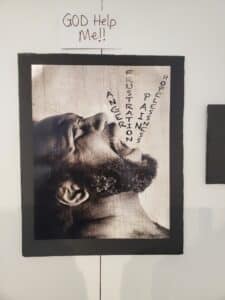
Centering Community Voices
The Speak Your Peace team sees storytelling as a way to show people from outside of their communities the challenges and triumphs of their neighborhoods. Nachelle elaborates, “Just looking [from outside] and trying to decipher what is going on is different from someone telling you what is going on. I think that’s what we were able to do with the storytelling at this event.” By providing a workshop and creative space for community members on the South and West side, Speak Your Peace aimed to center voices that are often ignored.
“To me it’s important to speak your peace, because if you don’t speak it, someone else will.”
- Kanesha Walker Amaro
By focusing on affirmative storytelling and highlighting the voices in the community, Speak Your Peace aimed to combat harmful narratives that are imposed from the outside.
Storytelling at the workshop showcased a variety of talents within the community with photography, art, poetry, music, and film working in unison to express a variety of voices. Hip hop artists, filmmakers, poets, and photographers from the community all had opportunities to present their talents. One of the featured artists was a filmmaker who started making films at the age of 17. At the event, the audience watched her documentary, filmed 7 years ago, which captures instances of police brutality that were spotlighted prior to the Black Lives Matter movement and shows the filmmaker’s view as an insider witnessing the violence. Another artist was a poet who used the space to share poems about her refusal to let any disabilities define her and allow her to center her experiences through poetry. The stories shared at Speak Your Peace were inter-generational and mixed-media, allowing for new connections to be generated between a range of communities.
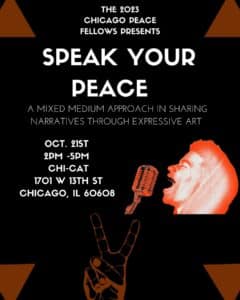
Mixed-Media Storytelling Build New Connections
Many of the Peace Fellows involved also had an opportunity to showcase their own artistic talents, which often do not have a chance to take center stage in their community work. For instance, Antwan McHenry curated a photography exhibit that showcased a variety of artists as well as his own work, which included a series of self-portraits he took during the height of the COVID-19 pandemic. Nachelle expressed admiration for his photographs, “Antwan, is an amazing photographer. […] Those pictures told a lot of stories of what was going on in his life, but probably also the lives of many others who were self-isolating. It was depression, it was confusion, it was chaos, it was sadness, it was the happiness at the end of the tunnel. All of those photos told the story of his experience.“ Kanesha, another 2023 Peace Fellow, also had the opportunity to share her poetry and bring in other local poets to perform.
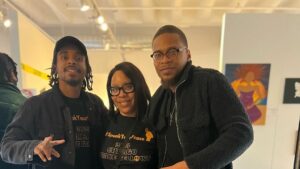
Speak Your Peace allowed for new connections to be made between artists and community activists across the South and West Sides. Reflecting on Speak Your Peace, Nachelle said that the most important thing accomplished was: “Building relationships with the community that was there."
"Working with the folks in our group, we got a chance to know each other, for real."
- Nachelle Pugh
We had been doing different workshops and activities, but we never really had a chance to [...] do the work that we do together and watch each other shine, and to be able to make suggestions with our personal experiences to help each other and make this event amazing. I think that’s the most important part and what I loved the most. Once we were done, everyone was like ‘yeah we gotta do this again and make it into something we do regularly’”. After the event, artists continued to connect and plan collaborations that will continue to center lived experiences for the world to experience and reflect on.
How the Island is Reactivating Their Public Spaces
This summer, the Island Civic Association worked with young people in the Island neighborhood of Austin to reactivate a playlot owned by G. R. Clark Elementary School as a public space. Nate Tubbs, a 2023 Chicago Peace Fellow and president of the Island Civic Association (ICA), was heavily involved in organizing the project. The work of Nate and the ICA aims to create a more connected, inclusive, and thriving community in the Island. In an effort to activate gathering spaces, ICA has been working with G. R. Clark and young community members to host Playlot Nights at the G. R. Clark Playlot. These events aim to attract attention towards creating more public outdoor spaces and promoting a healthier and more cohesive neighborhood.
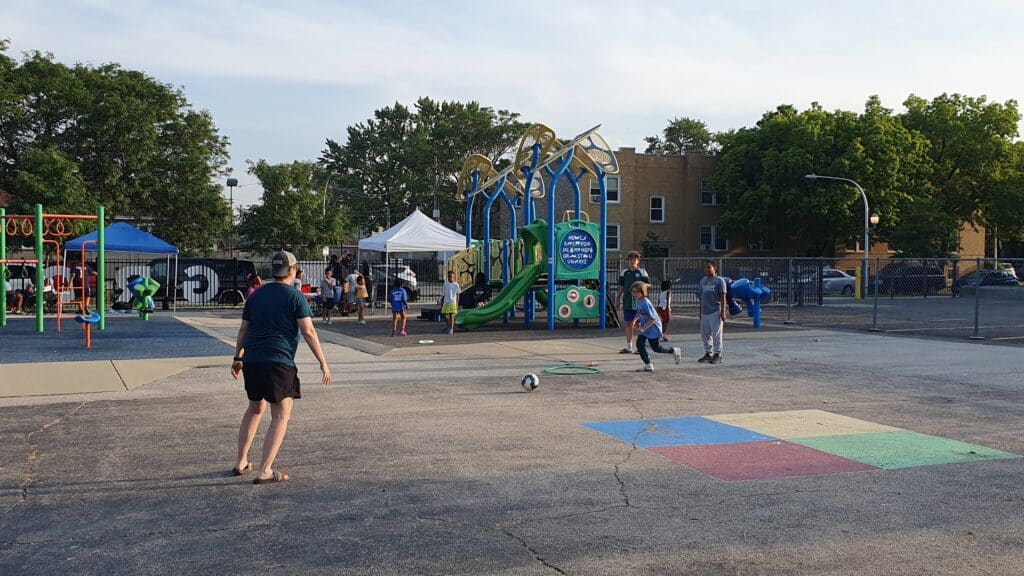
The playlot provides a large open space for people of all ages to utilize.
The Need for Public Space
Currently, the Island lacks outdoor spaces for young people and families to gather. The ICA has identified this as a problem that often causes people to have to leave the neighborhood for recreation. Nate comments, “The Island is a small pocket of the Southwest Austin community. It is a great little area, but it is kind of land-locked. This means a lot of people have to leave the neighborhood to go to a park or playground.” One way the ICA has worked to solve this problem is by activating existing areas to serve as public spaces in addition to their current uses.
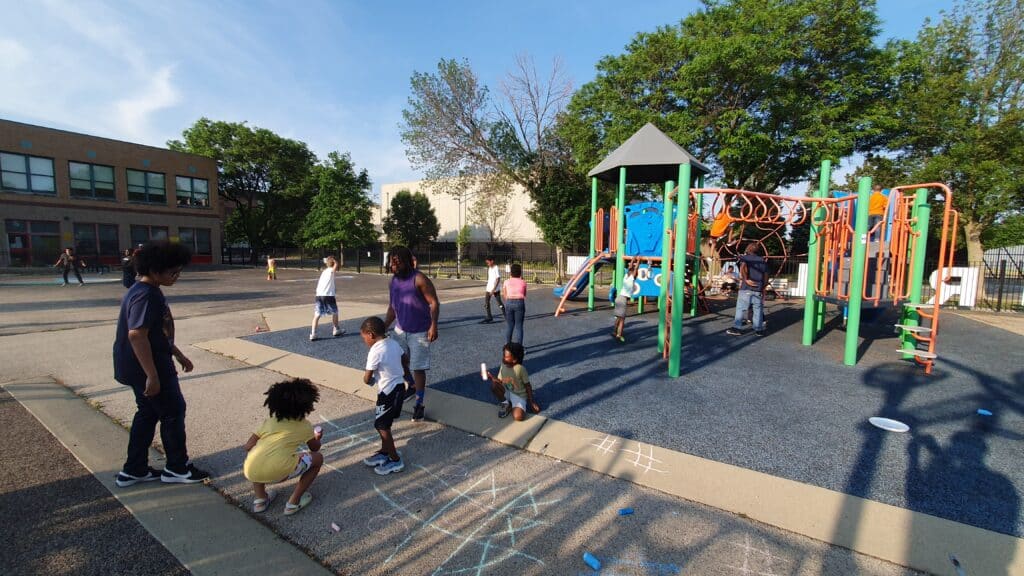
Playlot Nights provided an opportunity for people to gather in a public space that was previously closed outside of school hours.
In the past, the neighbors within the Island community have worked together to activate vacant spaces through community partnerships, however the Playlot project seeks to activate existing space on a larger scale through partnership with G. R. Clark. Island residents previously created a Nature Play Garden as an intergenerational outdoor space on a vacant city lot. However, the ICA’s work on the G. R. Clark Playlot Project focuses on creating a larger space where community members can gather for larger events or play sports and is dependent on working cooperatively with G. R. Clark. Up until this point, the G.R. Clark playground has been regularly locked outside of school hours. Many community members have asked whether it can be opened more regularly. In response ICA has been in discussion with the school about how they can activate the space for community events.
The Playlot Project
To show community support for opening the playlot to the public, the ICA and the G. R. Clark Local School Council have invested in its renovation alongside young people and community partners. The 'Playlot Project' has aimed to center the voices of the young people who plan to use the space in discussions about the playlot’s future.
Improve Existing Facilities
Students provided their ideas for improving the playlot and one of their primary concerns was to renovate a fence outside of the school that had become an eyesore. Community members and students worked together to install garden beds, repaint the fence, and add new plants and benches. Their work was aided by partnering with the humanitarian organization Convoy of Hope, as well as John Burns Construction and Christy Webber Landscaping Company which both provided employee volunteers to help improve the space. This spring, students added new signage and lettering to the fence along the playlot. These efforts to beautify the space, showed ownership, and demonstrated that there are people who care and are working on the space.
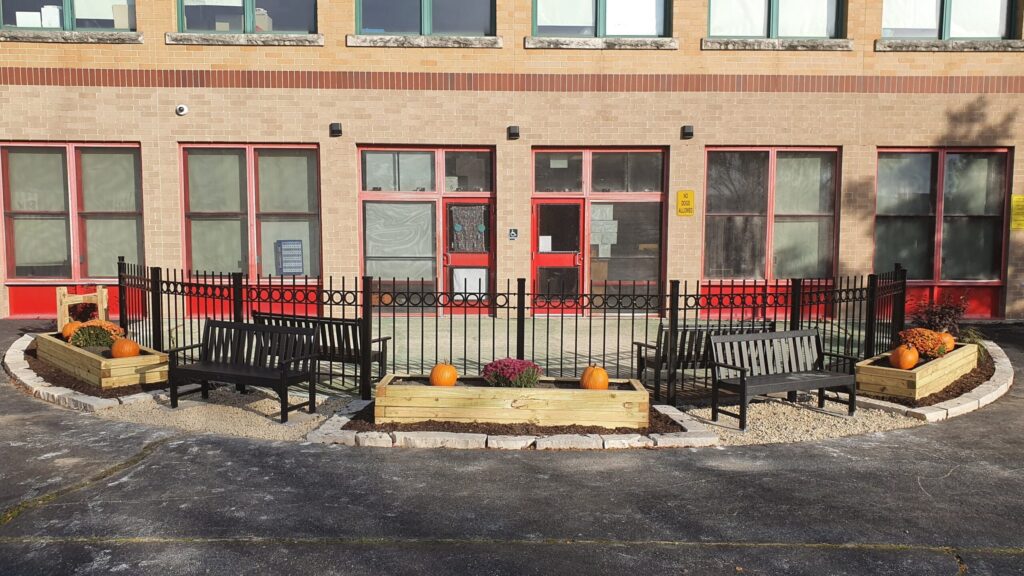
Increase Access
Following the renovations, the Playlot Nights acted as a proof of concept that the community is invested in reactivating the space. Playlot Nights were held on first Fridays through the summer, in June, July, and August when kids of all ages came together to play. The events incorporated activities for all ages such as chalk drawing, kickball games, music, and cold drinks. Nate noted that each night attracted new crowds. “I think that’s the beauty of doing something outdoors. While some people came from getting flyers and emails, other people were just walking their dogs or riding their bikes and stopped by. Some people drove by and did a double take because they weren’t used to seeing people using the space. So it was really a positive thing with great energy.”
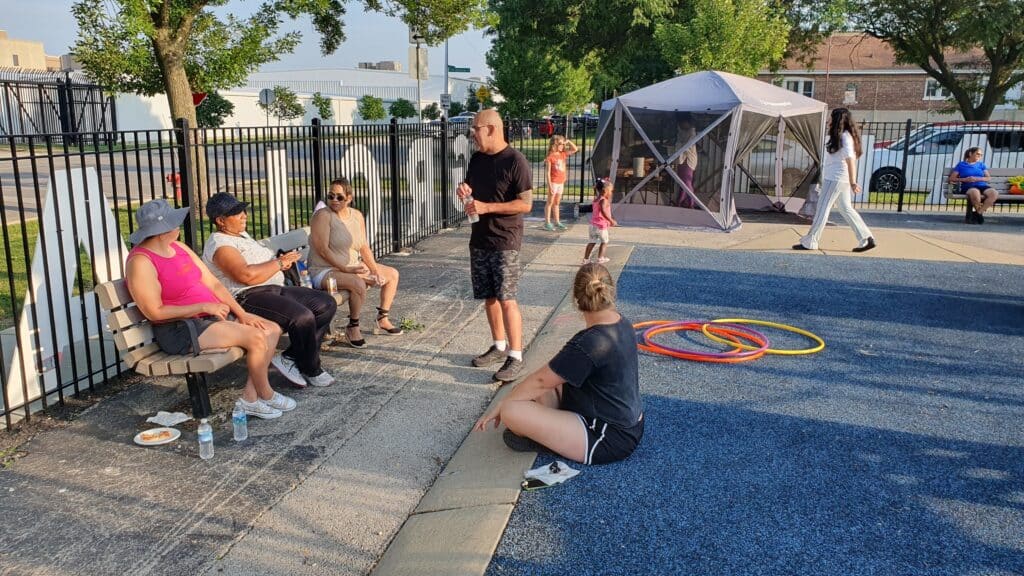
The input of young people is central to the community’s plans for the future of the Playlot project. Six young community members between the ages of 12 and 15 were commissioned by the ICA as Youth Ambassadors and helped organize the Playlot nights. Each Youth Ambassador lives within the Island neighborhood and worked alongside the community to plan the Playlot Nights in exchange for stipends. Youth Ambassadors planned events, distributed flyers, and administered games and activities. By showing that young people are capable of taking action to plan the future of the playlot and administer programs, ICA hopes to generate more community involvement and incrementally work towards a larger scale transformation of the space.
"The Playlot Nights brought the community together to have fun and opened the playlot to connect the community as a whole."
- Henry Ellis, ICA Youth Ambassador
The Playlot Project demonstrates the change that happens as a neighborhood explores their strengths. The Playlot is not something new to the Island neighborhood, but is an asset that is being reactivated through community involvement. Looking towards the future, the ICA aims to continue to maximize its impact in the community through collaboration and investment in existing resources.
2023 Peace Fellows Host Healing Oasis in West Humboldt Park
On September 17, the 2023 Chicago Peace Fellows held their first summer project, Healing Oasis, at the Children’s Garden of Hope in West Humboldt Park. The event emphasized healing on both an individual and community level, bringing in artists, musicians, healers, and other vendors together with the West Humboldt Park community.
Peace Fellows on the Healing Oasis team included: Antwan McHenry, Beria Hampton, Diane Deaderick DeMarta, Ernest Dawkins, Jonathan Johnson, Nate Tubbs, Yaritza Guillen, and Zahra Glenda Baker. Healing Oasis was part of a series of Summer Projects organized and hosted by the 2023 Chicago Peace Fellows to apply lessons learned through the GATHER curriculum to build peace within their communities.
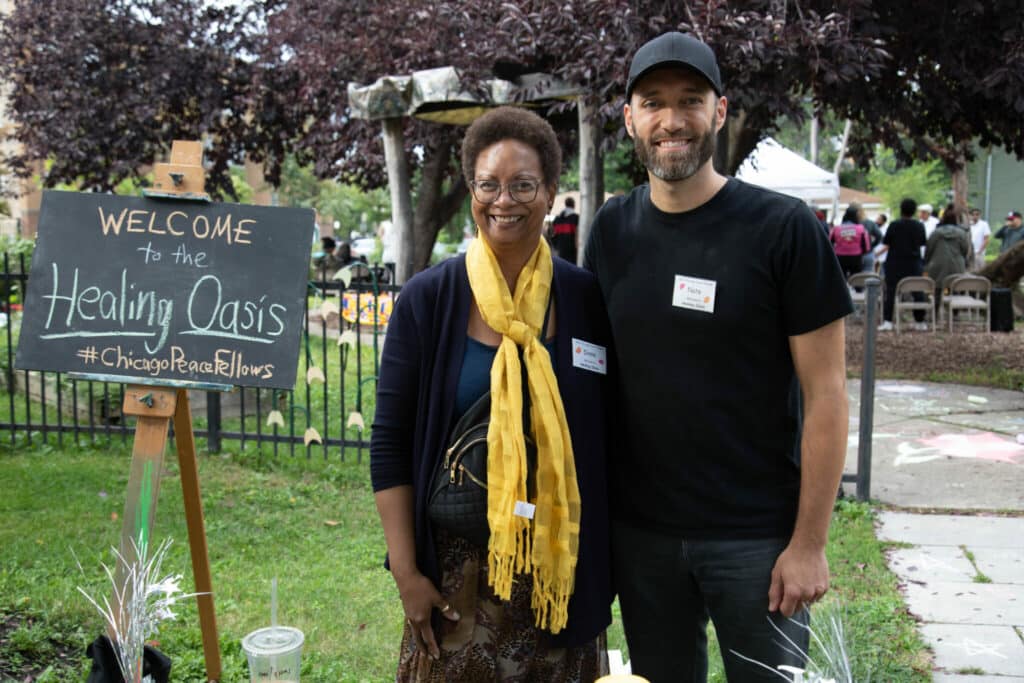
Summer Projects
Throughout their fellowship, the 2023 Peace Fellows had a series of planning meetings where they set the scope of their Summer Projects: determining which beneficiaries to target, choosing potential community partners, and drafting a program. After determining projects and team members, the Peace Fellows met on their own to plan.
The eight-member Healing Oasis team met consistently leading up to their event, which Antwan says played a large role in the success of the project:
”One thing that worked well was that we decided a planning time and stuck to it. We met consistently on the same day and same time and that helped us.”
— Antwan McHenry
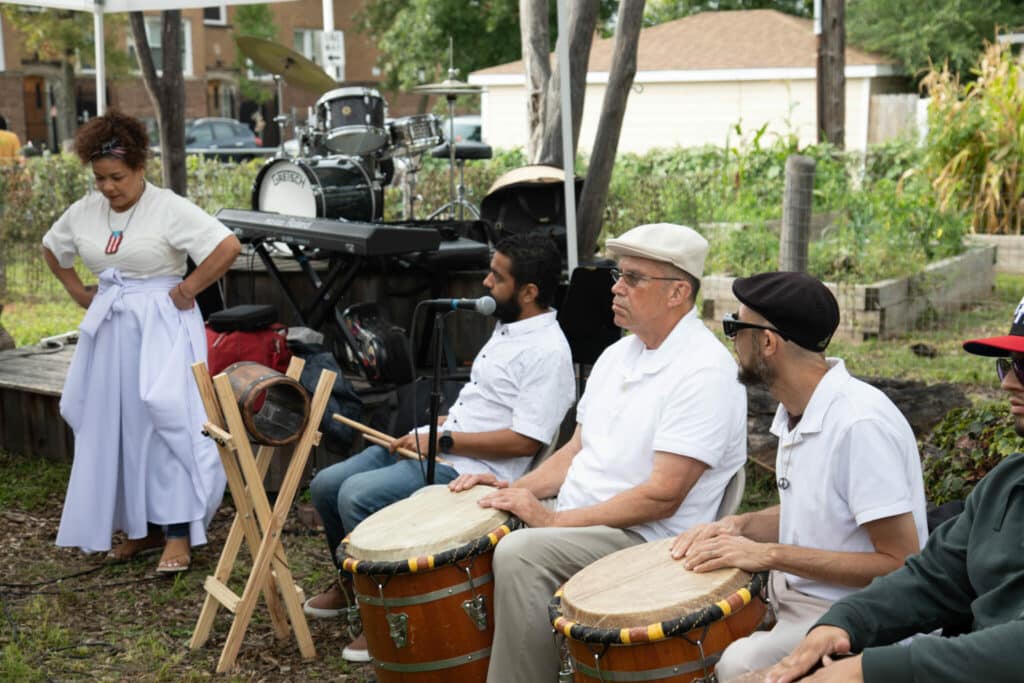
Community Connections
In their planning meetings, the Healing Oasis team chose to use the Children’s Garden of Hope as the location of the event due to its existing connection to the West Humboldt Park community. The Children’s Garden of Hope has a long history in the West Humboldt Park community. The Garden was created by NeighborSpace and West Humboldt Park neighbors to be a place where children can learn gardening skills and come together as part of the community to appreciate the beauty of growing things. Antwan has been on the board of Nobel Neighbors for the last five years, which have seen a host of improvements to the Children’s Garden of Hope as NeighborSpace has revamped it. Since then it has become a nexus for activities hosted by Nobel Neighbors.
The Children’s Garden of Hope also acted as a place that intersected with many of the Peace Fellows’ interests. This is in part due to Peace Fellows’ connections with NeighborSpace gardens, with Antwan acting as a steward for the Children’s Garden of Hope, Nate being involved in the Island Oasis nature play garden, and Yaritza working as a Stewardship Coordinator for NeighborSpace. This combination of community connections and the idea of having an outdoor space of health and healing made the Children’s Garden of Hope an ideal setting for the event.

Space of Healing and Refuge
Healing Oasis featured live music and dance, spoken word poetry, a drum circle, food and drinks, and art and wellness activities. All of those programmatic elements were bound around creating a space of refuge and refreshment for members of the community. Healing Oasis provided a space of healing and refuge for both residents of West Humboldt Park and the greater Peace Fellows community. The Peace Fellows involved in planning the event were each able to tap into different assets within their community networks, bringing in drummers, jazz musicians, clay workshops, tea, and more.
“Everyone has lots of different skills, strengths, and connections. I liked how the whole event represented a collaboration between all of the people involved […] each of us was able to leverage relational connections to pull together the different pieces. It’s the kind of thing where no one of us could have pulled that event together.”
— Nate Tubbs
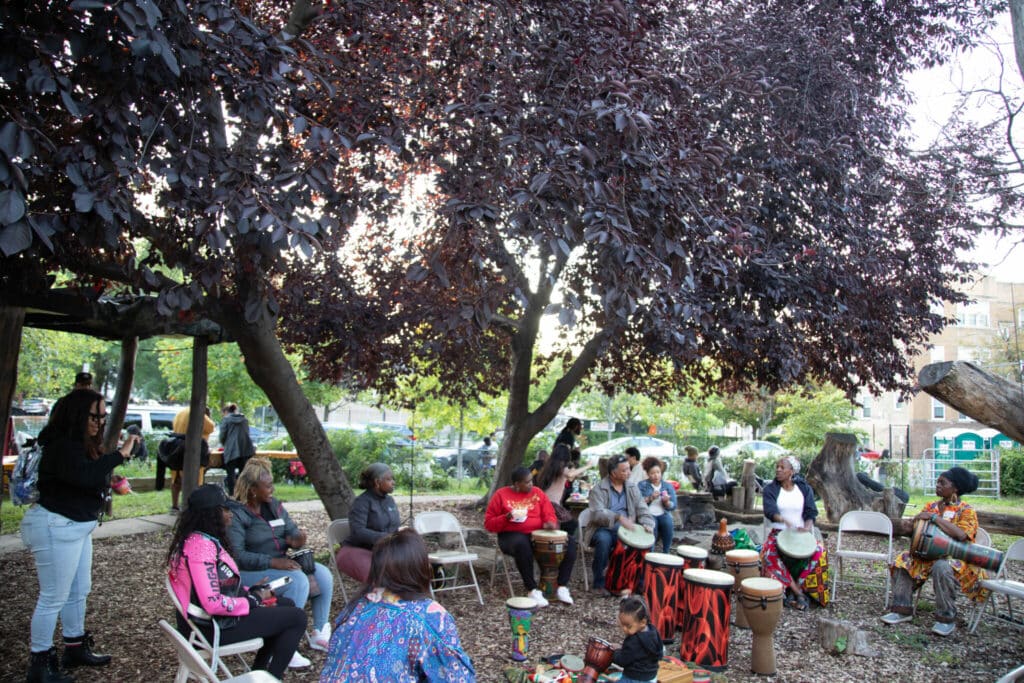
The investment of the 2023 Peace Fellows into Healing Oasis led to the event being larger than any event the Children’s Garden of Hope has seen recently and brought about deeper connections in the community. While the Children’s Garden of Hope is a regular space for Nobel Neighbors to host events, the larger scale of Healing Oasis attracted even more attention.
Antwan noticed that neighbors who had never been to the space were attracted by the scale of the event:
“I saw people from the community and word starting to pass. Word passed along and folks came by, plugged in, and enjoyed the space. […] New neighbors came down and mentioned that they didn’t know what was going on, but wanted to see.”
— Antwan McHenry
By tapping into existing assets, the 2023 Peace Fellows were able to activate a deeper sense of community in the West Humboldt Park neighborhood and provide members of the community with an opportunity to heal and rest.
